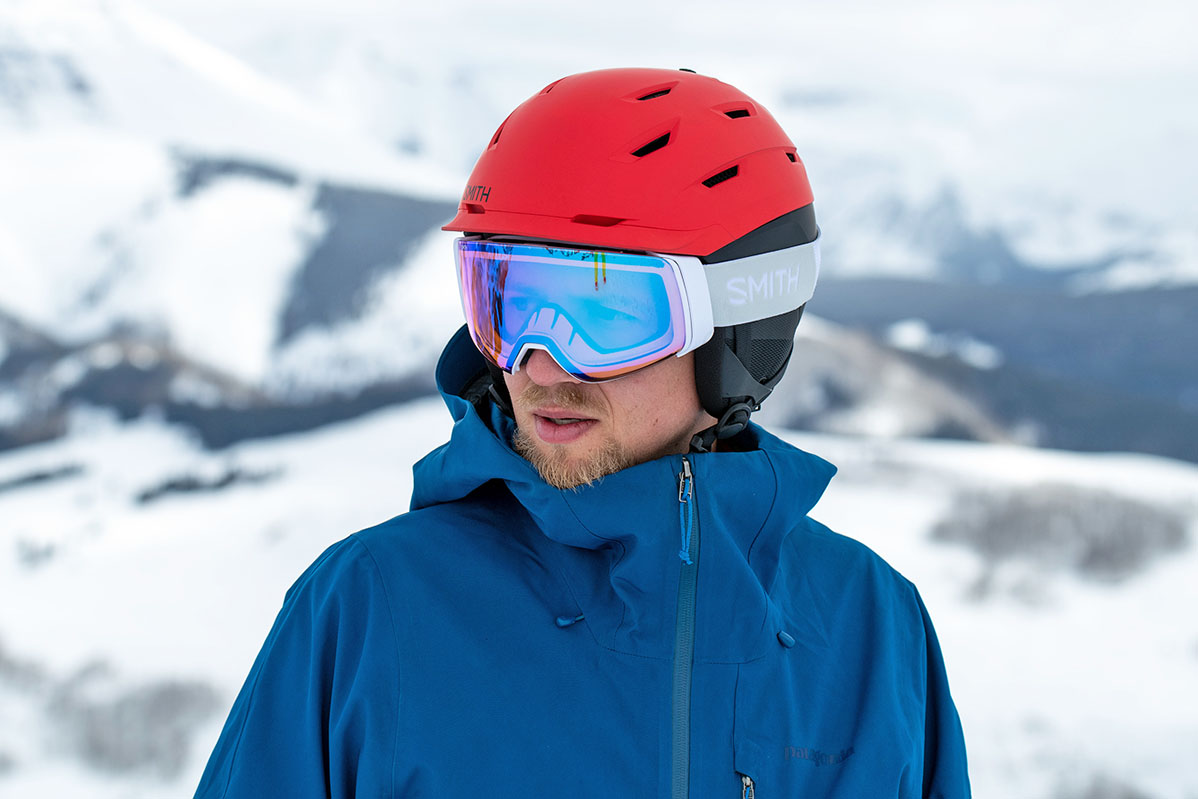
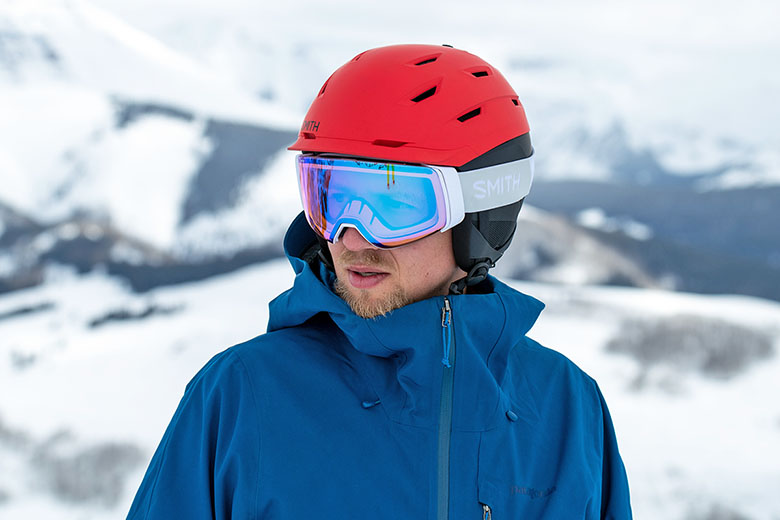
No matter your ability level, picking up a helmet for skiing is a no-brainer. If you’ve been putting off replacing a helmet that’s years old or are new to the sport, recent advancements have made them lighter and even safer, so now is a great time to take the plunge. High-end models on our list offer advanced fit customization and venting, but those who only get up to the mountains a few times a year will be fine with a cheaper option. From local lifts in the Pacific Northwest to technical couloirs in Patagonia, our editors have put dozens of helmets to the test over the years, from featured-packed and teched-out designs to basic but effective options that get the job done. Below are our top picks for the 2024-2025 season. For more background information, see our comparison table and buying advice below the picks, along with details about our testing process.
Editor's note: This guide was updated on October 18, 2024, to swap our favorite backcountry lid from the Salomon MTN Lab to the Movement 3Tech Alpi, add Smith's versatile Summit to the list, and refresh the rest of the guide to reflect 2024-2025 models. We also expanded a couple sections, adding more info about our testing process and helmet sizing.
 Construction: Hybrid in-mold
Construction: Hybrid in-mold
Weight: 1 lb. 2.0 oz.
Ventilation: Adjustable (21 vents)
What we like: The Vantage puts it all together: comfort, performance, safety, and looks.
What we don’t: Pretty expensive.
We’ve tested a lot of ski helmets, and none is more impressive than the Smith Vantage. To start, the quality and attention to detail are clear, with a soft but supportive liner, excellent coverage all around your head, and an easy-to-use BOA dial for adjusting fit. You simply put on the helmet and forget that it’s there—the Vantage feels that comfortable and light. There's also a great mix of warmth and ventilation with a total of 21 vents controlled by two separate sliders for easy customization, along with two different shell shapes available (a rarity in the market) to get the perfect fit: standard and Round Contour. All in all, you won’t find a helmet that's more comfortable and universally capable for frontside and backcountry use.
The Vantage also comes with all the safety bells and whistles in Smith's arsenal. The hybrid in-mold build (tough ABS plastic on top with a lighter in-mold lower) is complemented by the brand’s distinctive honeycomb Koroyd construction, which is intended to improve energy absorption in a crash. And the popular MIPS liner, designed to protect your brain in an angled impact, is included. These safety features are tough to quantify, but it’s worth noting that the extra tech is integrated very well into the low-profile design. Whether the whole package is worth the steep $275 price tag is up to you. Editor’s note: We’ve found the MIPS model does run a bit small, so those on the high end of the fit range may want to size up... Read in-depth review
See the Smith Vantage MIPS See the Women's Smith Vantage MIPS
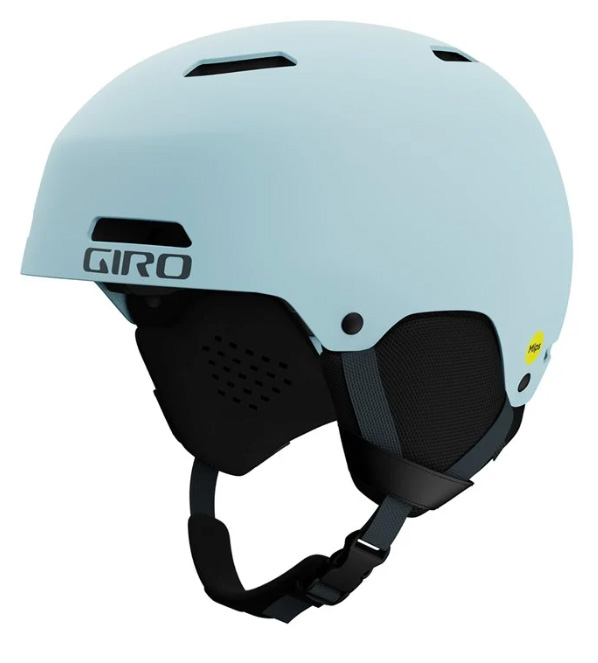 Construction: ABS
Construction: ABS
Weight: 1 lb. 2.0 oz.
Ventilation: Fixed (8 vents)
What we like: A tough, MIPS-equipped helmet for just $105.
What we don’t: Lacks the lightweight feel and high-end fit and comfort of pricier designs.
Sticking to a budget doesn’t always mean you have to sacrifice performance, and the Giro Ledge MIPS is a case in point. Most importantly, it covers all the bases in terms of protection, with a tough ABS hardshell, close and adjustable fit, and top-of-the-line MIPS technology (to absorb the forces of an angled impact). This is the same safety system used by many more premium (read: pricier) competitors here, so it’s a win to find it for just $105. You don’t get a lot of other bells and whistles, but there’s enough to make most skiers happy: a goggle retainer hook around back, removable ear pads, and a cool, skate-inspired look. If you’re looking to save without compromising on safety, the Giro Ledge MIPS is hard to beat.
The Smith Holt below ($65) is another popular budget pick and features a similarly simple but functional design. But for us, the Ledge’s addition of MIPS is well worth the extra $40. A closer alternative is Smith’s Scout MIPS ($110), which goes head-to-head with the Giro for a $5 price increase. Choosing between the two helmets is like splitting hairs: Both feature tough hardshells that can take a good knock, eight fixed vents, and availability in a wide range of colors–although neither offers the lightweight build or fit conveniences of higher-end offerings. Notably, the Scout also tacks on an all-season certification, which means it can pull double duty as a skate or bike helmet, while the Ledge is only certified for snow sports. Trying the two on will help settle the score, but in the end, both are high-quality budget designs from leading helmet brands.
See the Giro Ledge MIPS Helmet
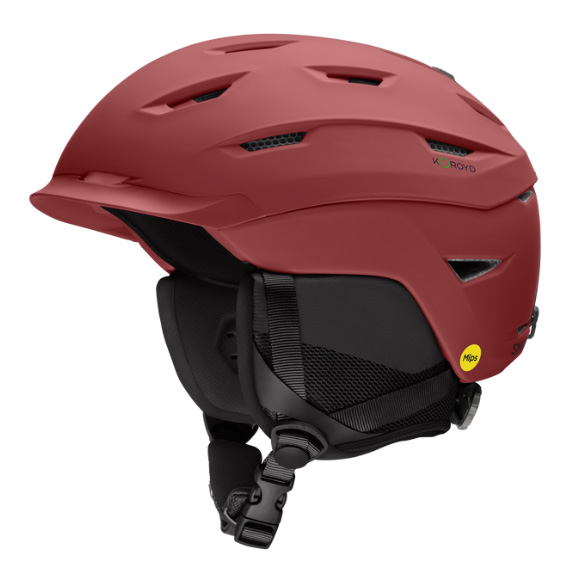 Construction: Hybrid in-mold
Construction: Hybrid in-mold
Weight: 1 lb. 3.0 oz.
Ventilation: Adjustable (20 vents)
What we like: High-quality and very comfortable build.
What we don’t: Not as versatile as the Vantage above.
The Vantage ($275) above offers versatile performance for both resort and backcountry use, but those who stay inside the ropes can save with the Level here. Right away, you can tell this is a thoroughly modern helmet: Its sleek looks, generous ventilation, and hybrid shell construction closely resemble the pricier Vantage above. And like the Vantage, it also uses Smith’s Koroyd technology for impact absorption and includes a MIPS liner for solid protection against angled impacts. Throw in a soft and warm interior and a plusher liner than its pricier sibling, and the Level has all the right ingredients for a reasonable $225.
In saving $50 compared with the top-rated Vantage, you do make a few compromises. To start, the Level is a little heavier (by about 1 oz.) and has only a single adjuster for the top vents (the Vantage has two). Further, Smith swapped the Vantage’s premium BOA fit system for an in-house VaporFit design. That said, the level of customization is very similar, and we’ve had no complaints with our VaporFit-equipped helmets. Overall, the lighter and airier Vantage is the better all-rounder, but we see little to complain about with the Level for lift-assisted use. If you’re looking to save even more, Smith’s Mission MIPS costs $145 and features a lighter but less durable in-mold construction... Read in-depth Level MIPS review
See the Smith Level MIPS See the Women's Smith Liberty MIPS
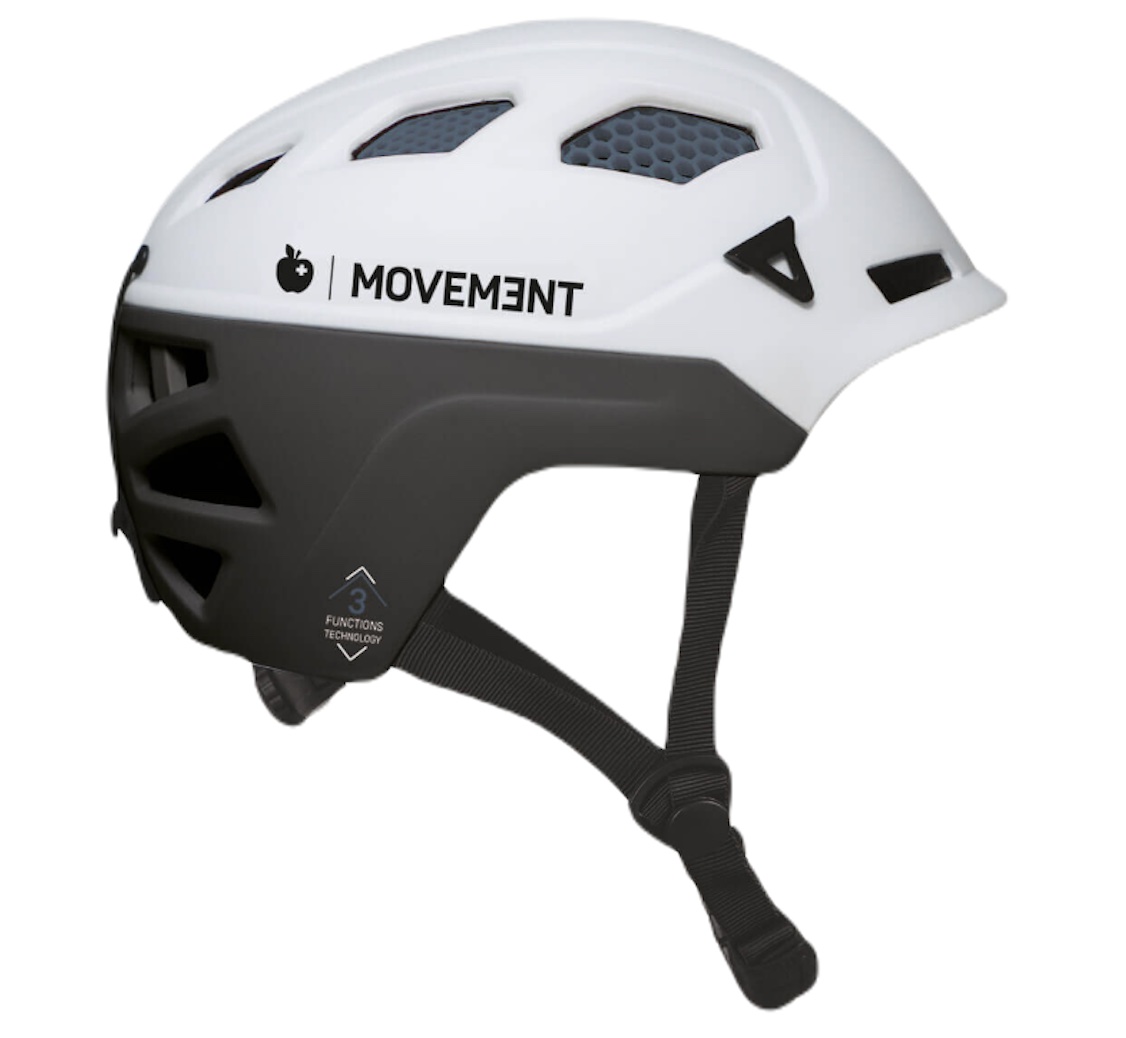 Construction: In-mold
Construction: In-mold
Weight: 12.6 oz.
Ventilation: Fixed (16 vents)
What we like: Impressively light; triple-certified for skiing, climbing, and biking.
What we don’t: Minimally padded for frigid days and inbounds use.
Switzerland-based Movement touts itself as a freeski company with an uphill, do-it-all focus, which is exactly what their 3Tech Alpi Honeycome helmet embodies. Now in its second iteration, this lid is impressively versatile with a triple-certified build that meets the safety standards for skiing, climbing, and biking. We recently tested the 3Tech in southern Patagonia and found that it was a great match for all three, with a compact and low-profile shape that allows it to go largely unnoticed throughout the day. It’s true you can get similar versatility with the Salomon MTN Lab below, but the 3Tech Alpi is the better breather with four additional vents, checks in 0.3 ounces lighter, and will save you $30.
Poised to become a quick favorite among backcountry professionals like avalanche forecasters, ski guides, and uphill fanatics alike, the 3Tech Alpi Honeycomb recently dethroned the MTN Lab as our top backcountry pick due to the ventilation, weight, and cost advantages mentioned above. Smith’s Summit below also ranks highly in this category but is the heaviest of the bunch at 1 pound and noticeably bulkier than both the Movement and Salomon lids. The 3Tech Alpi also comes with both summer and winter padding, although the latter is relatively thin for frigid days out and frequent inbounds use (you may want to add a thin beanie underneath). Small gripes aside, the 3Tech Alpi is an impressively well-balanced design for the weight and price, earning a spot high on our list this season.
See the Movement 3Tech Alpi Honeycomb See the Women's 3Tech Alpi Honeycomb
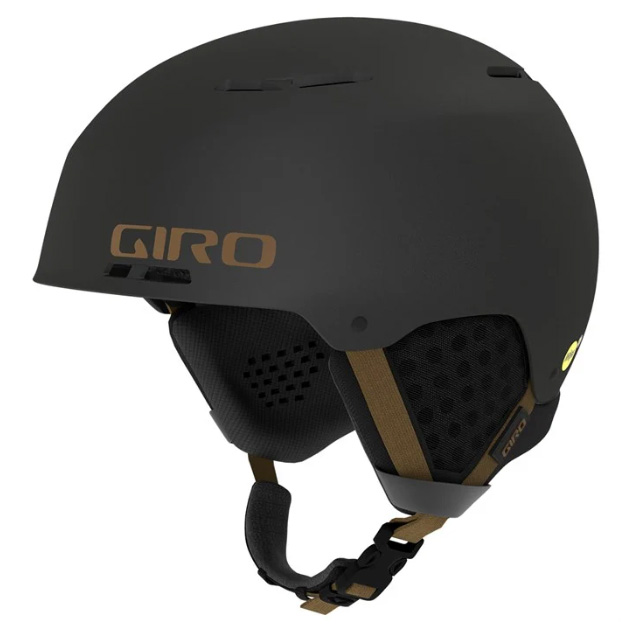 Construction: ABS
Construction: ABS
Weight: 1 lb. 1.6 oz.
Ventilation: Fixed (10 vents)
What we like: Stylish freestyle design and durable build.
What we don’t: Overly simplified fit system.
There’s no rule book that states you need a certain kind of helmet for the park, but freestyle aficionados will benefit from prioritizing certain features over others. First is a hardwearing construction: Durability matters far more than weight when it comes to hitting jibs and sliding rails, so most park rats will want to look for a robust hardshell design. Second is protection: We recommend looking for a helmet with MIPS—if rotational impact protection is essential anywhere, it’s when you’re catching big air off kickers. Last but not least, style matters: Most freestyle riders will want a skate-inspired lid, along with the versatility to wear it with or without ear pads and with the goggle strap underneath or overtop.
There are plenty of freestyle options to consider, but Giro's Emerge MIPS stands out among the competition for its premium feature set at a competitive price point. Instead of MIPS' standard plastic frame, the Emerge boasts MIPS' higher-end Spherical technology, which uses a ball-and-socket-type configuration of premium EPP foam to absorb impacts (quick primer: EPS foam cracks under pressure and should be retired after a crash; EPP foam disperses the force and is more resilient). We do wish the Emerge had a rear dial for fine-tuning fit, but it's hard to be overly critical at this price point. All told, there's a reason this lid is so popular among park skiers: It's durable, protective, and looks good to boot. For a similarly intentioned helmet with a brimmed design and standard MIPS, check out the Giro Trig MIPS ($150).
See the Giro Emerge MIPS
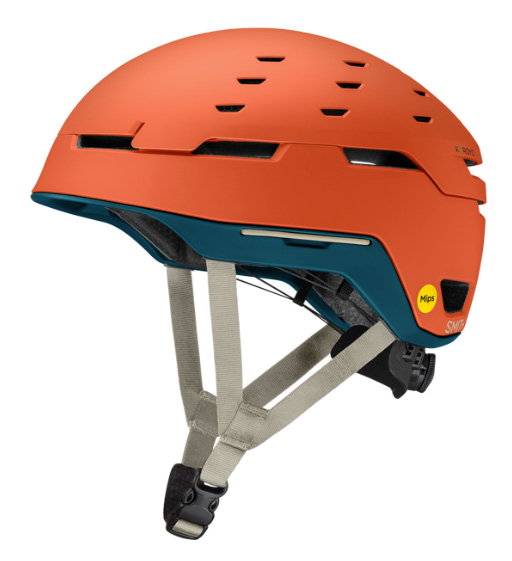 Construction: Hybrid in-mold
Construction: Hybrid in-mold
Weight: 1 lb.
Ventilation: Fixed (33 vents)
What we like: Highly customizable fit, triple-norm-certified build, and full suite of safety features.
What we don’t: Heavier and bulkier than the Movement 3Tech Alpi above and Salomon MTN Lab below.
With a highly customizable fit and do-it-all intentions, Smith’s Summit MIPS is one of our favorite options for the backcountry. Starting with fit, the BOA system is reimagined with a flexible “yoke” that allows for easy fine-tuning and added durability (there are fewer plastic parts that can break over time). The system also folds into the helmet for storage, which helps keep bulk to an absolute minimum. And you get Smith’s full suite of premium safety features, including a MIPS liner, zonal Koroyd coverage for added energy absorption, and a hybrid in-mold build that nicely balances weight and longevity. Tack on a whopping 33 fixed vents, integrated routing to keep your headlamp in place, and attachment points for strapping to a pack, and the result is a purpose-built lid that’s clearly at home in the backcountry.
The Summit is Smith’s first triple-norm-certified helmet, meeting the safety standards for alpine skiing, mountaineering, and climbing. This puts it in an elite category with the likes of the Movement 3Tech Alpi above and Salomon MTN Lab below, both of which are lighter than the Summit at 12.6 and 12.9 ounces respectively and can be used for biking (the Smith doesn't meet the same EN 1078 standard). The Movement is also cheaper by $15, which is why we rank it higher, but the Summit is the most fully featured option of the bunch and arguably the easiest to stash inside or outside a ski backpack. All told, it’s another impressive effort from Smith and a very intentionally built option for backcountry riders who prioritize safety and versatility.
See the Smith Summit MIPS
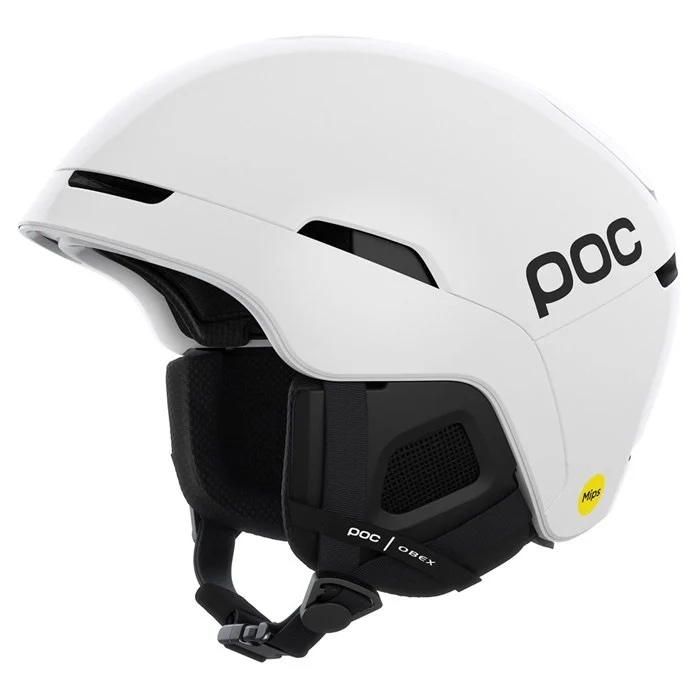 Construction: Hybrid in-mold
Construction: Hybrid in-mold
Weight: 1 lb.
Ventilation: Adjustable (11 vents)
What we like: Solid build and well-integrated safety features.
What we don’t: A bit bulkier and less ventilated than the Smith options above.
Sweden-based POC has built a reputation around toughness and safety, and the Obex is their most well-rounded helmet to date. Mixing an in-mold construction with a tough ABS shell overtop, the helmet is competitively light but can still take a knock (and limit cosmetic damage) thanks to the exterior layer of tough plastic. We also think it’s a classy-looking design with a low-profile shape and clean styling. Rounding out the setup, the Obex has an easy-to-use fit system that secures evenly around the head, adjustable vents, and a proven MIPS liner (previous models features the brand’s in-house SPIN system).
What’s not to like about the POC Obex? Despite their best efforts, the helmet still is bulkier and not as streamlined as Smith’s Vantage and Level above. As a result, we found that it feels a little heavier than its 1-pound weight suggests. Further, the interior padding isn’t as plush as the Smith designs, and we prefer more cushioning along the chin strap. Finally, only the top vents are adjustable, which means the helmet can run cold on frigid days. To be fair, these differences still are fairly minor, and the Obex’s combination of a premium safety suite and reasonable $200 price point earn it a spot on our list for the 2024-2025 season.
See the POC Obex MIPS
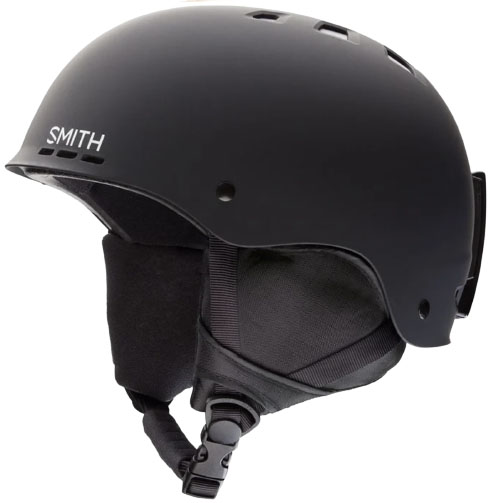 Construction: ABS
Construction: ABS
Weight: 1 lb. 4.0 oz.
Ventilation: Fixed (10 vents)
What we like: Great price for a well-rounded and surprisingly comfortable lid.
What we don’t: Heavy, no MIPS liner available, and cheaper-feeling foam.
Top to bottom in their snow helmet lineup, Smith just gets it. At $65, the Holt is their true budget offering and one of our favorite helmets in its price range. It’s an exercise in smart design, and one of the Holt’s biggest accomplishments is avoiding the bulky and off-putting mushroom look associated with cheap helmets. While not as low-profile or techy as the premium Vantage or Level above, it’s a notable improvement over most of the budget field (Giro’s Ledge MIPS above is similarly sleek but $40 pricier).
One thoughtful touch on the entry-level Holt is its adjustment system. You don’t get a dial to tweak the fit, but an elasticized band at the back of the helmet stretches to accommodate your head surprisingly well. Warmth and comfort also are competitive, although the foam, while thick and warm, feels cheaper and muffles sound more than we prefer. On the whole, we’ve found that it’s often worth upgrading to a mid-range or premium ski helmet, and particularly for those who get in a lot of days on the mountain. But as long as you’re willing to compromise a bit on comfort, don’t have a MIPS liner on your must-have list, and aren’t prone to overheating (the fixed ventilation is only mildly effective), the Holt is a real winner.
See the Smith Holt Helmet
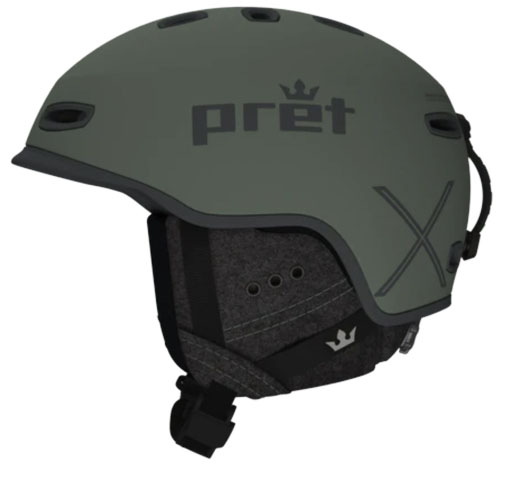 Construction: In-mold
Construction: In-mold
Weight: 15.8 oz.
Ventilation: Fixed (12 vents)
What we like: Comfortable liner, competitive price, and fun styling.
What we don’t: Non-adjustable vents.
Selecting the right mid-range helmet is an exercise in prioritization. If your must-haves are liner comfort, adjustable fit, and sticking out from a sea of Smith, Oakley, and Giro lids, then the Pret Cynic X2 is a fine choice. Its wool-blend liner gives it one of the more comfortable interiors for under $200, and the easy-to-use fit system is comparable with a BOA design. We’d like to see adjustable ventilation at this price point, but the Cynic’s fixed system with 12 vents and some open/close flaps along the interior do a pretty good job at temperature regulation.
The Cynic's in-mold construction keeps weight in check at under a pound for the medium size, and we appreciate that you get a little extra durability thanks to strategically placed panels of polycarbonate that thicken sections of the shell. Another nice touch is Pret’s use of Haleo antimicrobial foam, which guards against odor buildup. Finally, looks are always subjective, but we like the styling of the Cynic and Pret’s lineup in general (although some may find the large “Pret” along the sides a bit extreme). For a similar design with a bump in ventilation and protection, check out Pret's Fury X ($250).
See the Pret Cynic X2 MIPS
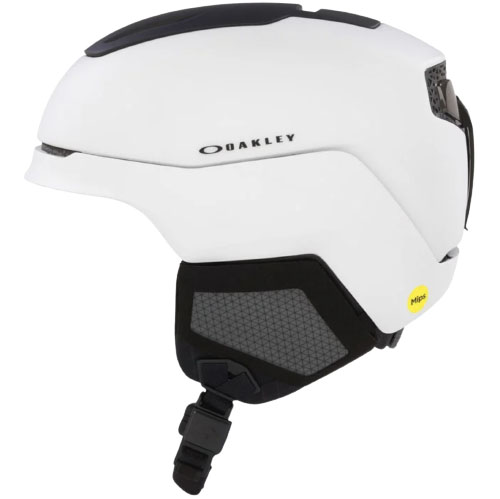 Construction: Hybrid in-mold
Construction: Hybrid in-mold
Ventilation: Adjustable
What we like: Low-profile, good-looking design; quality materials throughout.
What we don’t: A little low on ventilation; we miss the prior version’s modular brim.
Oakley makes some of our favorite ski goggles, but the company only recently jumped into the helmet game with the Mod series. Now in its second generation, the Mod5 MIPS is their top-end offering that features a clean, low-profile shape and plenty of premium touches. In testing the updated lid this winter, we were particularly impressed with the excellent coverage, durable construction, just-right amount of padding (relatively minimalist but comfortable and warm), and trustworthy BOA tensioning system. As with the original Mod5—and the Mod line in general—ventilation is a weak point, and we wouldn’t recommend it for slackcountry or backcountry skiing. But as a quality resort helmet, it’s a great-looking, well-built option.
The original Mod5 had a unique modular brim that allowed you to swap sizes to match your goggles. We found that feature to be very functional and were disappointed that Oakley dropped it with the current model. As such, we had a harder time pairing the helmet with our large Anon M4 Toric goggles—it worked, but a smaller brim would’ve limited the downward pressure on our nose. Additional nitpicks with the revamp include a high weight (1 lb. 8 oz. for our men’s large) and too-small patch of fleece on the chin strap. The pros still outweigh the cons for us—the quality of the materials, including the Polartec Power Grid liner, is very evident—but there are enough downsides to keep the Mod5 MIPS from ranking higher on our list... Read in-depth review
See the Oakley Mod5 MIPS
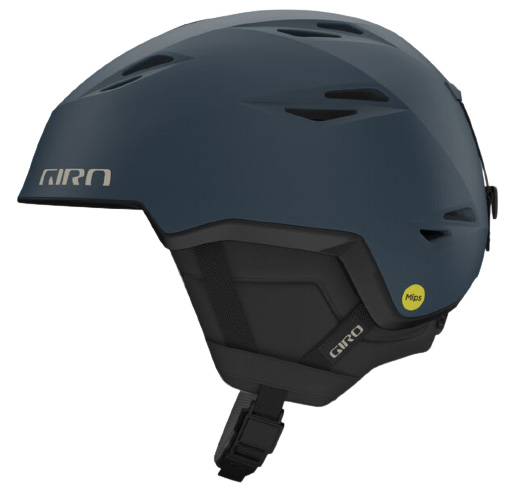 Construction: In-mold
Construction: In-mold
Weight: 14.1 oz.
Ventilation: Adjustable (16 vents)
What we like: One of the lightest MIPS-equipped helmets here.
What we don’t: More expensive and heavier than the 3Tech Alpi Honeycomb above.
Movement 3Tech Alpi Honeycomb above has quickly become a top choice among ski mountaineers and backcountry riders, but it has a formidable competitor in the Giro Grid Spherical. Clocking in at 14.1 ounces, the Grid combines a lightweight and well-ventilated design with MIPS Spherical for top-notch protection. This technology uses ball-and-socket construction to mitigate weight and bulk while still guarding against rotational impacts, resulting in one of the lightest MIPS helmets on this list. And in terms of fit and finish, Giro held little back with the premium Grid, which features a plush removable liner, glove-friendly fit and vent adjustments, and a sleek magnetic snap buckle that we’ve found incredibly easy to use.
In the end, the decision between the Grid and the 3Tech Alpi Honeycomb comes down to a matter of priorities. The Movement will save you a full $50, and its fixed vents and optional liner and ear inserts get the job done for most backcountry enthusiasts. Furthermore, the 3Tech Alpi Honeycomb’s climbing and mountaineering rating lends extra assurance for the uphill, and the helmet easily accommodates a headlamp (the Grid does not). On the other hand, with the Giro, you get the angled impact protection of MIPS, and warmer insulation along with adjustable vents make it a more well-rounded option for resort skiing or especially cold days of touring. For those who bounce between the resort and the backcountry, we think the Grid (and women’s Envi) is truly hard to beat. And if you’re looking for Giro’s premium freeride offering, check out the Tor Spherical MIPS ($250).
See the Giro Grid Spherical See the Women's Giro Envi Spherical
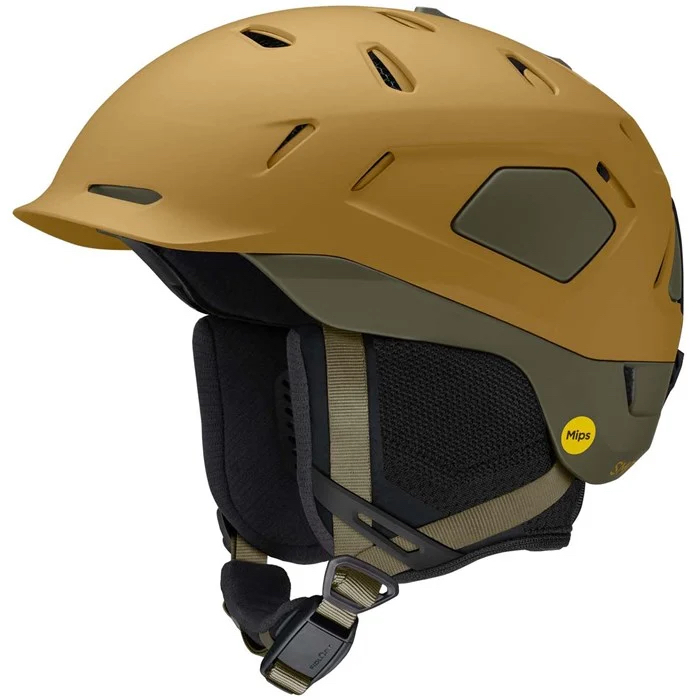 Construction: Hybrid in-mold
Construction: Hybrid in-mold
Weight: 1 lb. 3.4 oz.
Ventilation: Adjustable (24 vents)
What we like: Premium levels of protection and comfort.
What we don’t: Very expensive and fairly heavy for backcountry use.
Smith makes a helmet for just about every type and style of skier and snowboarder, and their range-topping Nexus is tailor-made for those tackling ambitious lines. Replacing the Quantum for last season, this helmet includes the full arsenal of the brand’s safety features: The energy-absorbing Koroyd construction used in portions of the Vantage and Level above is extended to the full shell, you get additional protection along the back and sides of the head with durable ABS plastic, and a MIPS liner is included with all versions. Smith tops off the no-holds-barred build with a highly tunable BOA fit system and magnetic chinstrap, 24 vents with two separate adjusters, and an antimicrobial liner.
All that said, we’re still not sold on the Nexus over a helmet like the Vantage above. In short, the lid is very expensive at $330, and its improvements over other designs are incremental at best. By comparison, the Vantage packs in nearly as many safety features, weighs an ounce and a half less, and comes in $55 cheaper. It also ventilates similarly and is a bit better for backcountry use due to its lighter weight. It’s true that the Nexus features complete Koroyd coverage (the Vantage's is zonal), but most skiers won't notice the difference. That said, if you’re after the full package—including maximum protection and just about every modern feature currently on the market—the Nexus MIPS is the one to get... Read in-depth review
See the Smith Nexus MIPS
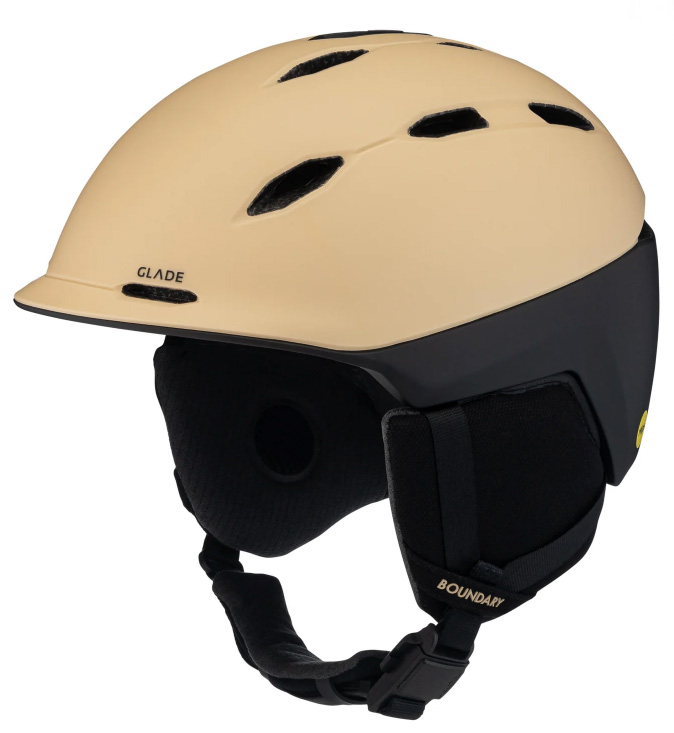 Construction: In-mold
Construction: In-mold
Weight: 1 lb.
Ventilation: Adjustable (16 vents)
What we like: Great feature set and style; reasonably lightweight.
What we don’t: Pricier than most of the in-mold competition.
Breckenridge, Colorado-based Glade is a classic story of “by the people, for the people.” With the goal of keeping things passionate yet professional, the small company started with eyewear (sunglasses and goggles), but has now dipped into the helmet world with their Boundary MIPS here. For being pretty new to the game, it’s clear they did their homework. The Boundary is lightweight (15.8-ounces for our men’s medium), has soft cushioning that completely isolates you from the fit/adjustment system, and features a Fidlock buckle, MIPS liner, adjustable front vents, and a small visor. What’s more, we found it fits seamlessly with Glade’s goggles (and decently well with offerings from Smith and Dragon, too). Check, check, and check.
Our main gripe with the Boundary is price: At $199, it’s more expensive than similar in-mold designs like the Smith Mission ($145) and Pret Cynic X2 ($160) above. It’s true the Glade is more feature-rich, uses longer-lasting EPP foam, and has a cushier interior than an alternative like the Mission, but we’re not sure the distinctions are worth the extra cash (plus, the Smith is available in a much wider range of sizes). In other words, if you’re going to spend $200, it’s worth considering a more durable hybrid in-mold design like the Smith Level ($225), which will do a much better job resisting dings and dents when catching a branch in the trees or dropping the helmet on a hard surface. But for a lightweight one-helmet option for resort-goers who occasionally dip into the backcountry, the Boundary is a fun newcomer with great style. Note: Glade released a second helmet last winter, the Tenmile ($129), which has a streamlined build that undercuts the Boundary in price. We'll report back after testing this newer lid.
See the Glade Boundary MIPS
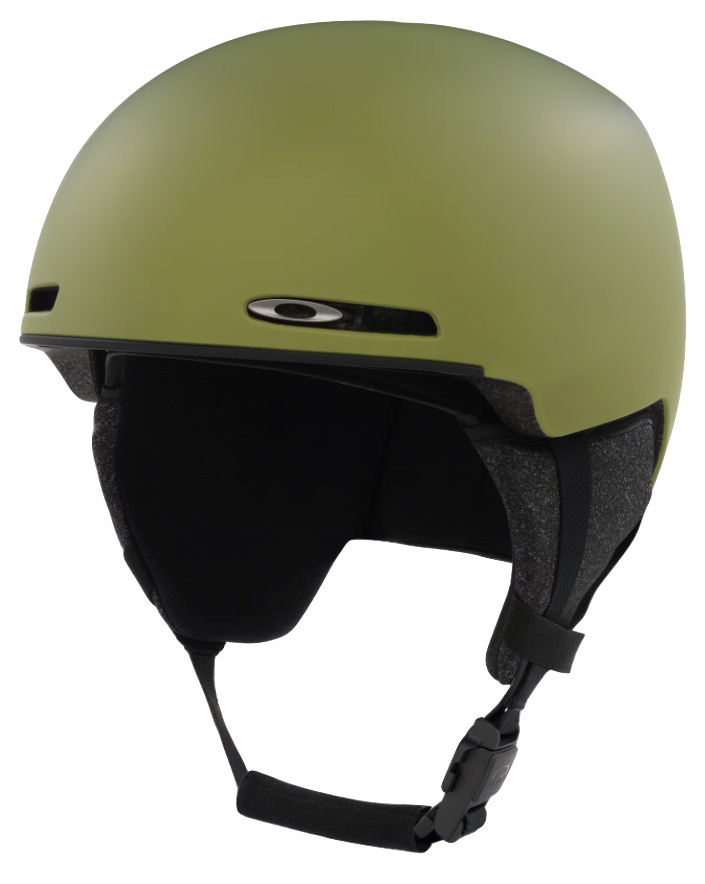 Construction: In-mold
Construction: In-mold
Weight: 14.6 oz.
Ventilation: Fixed (6 vents)
What we like: Lightweight, good looks, and uncharacteristically premium feature set for the price.
What we don’t: Limited durability and minimal ventilation.
On the heels of the Mod5 and Mod3 is Oakley’s latest build: the Mod1. As the name indicates, this is their entry-level model with a simplified look, trimmed-down feature set, and budget-friendly $105 price. But Oakley managed to pack in a number of nice touches that aren't typically found at this price point, including a magnetic buckle and Boa’s proven 360-degree fit adjustment system. Comfort is also good for the mid-range category thanks to a beanie-like lining that has a soft feel and molds nicely to your head, and the in-mold construction keeps weight low at just 14.6 ounces. For casual resort riders and those looking to keep weight and cost low, the Mod1 is a surprisingly well-rounded budget option.
We’re happy to see Oakley expanding their helmet collection, but the Mod1 sits in a bit of an in-between zone. To start, the in-mold construction compromises on durability compared to ABS competitors like the Giro Ledge and Smith Holt above. Those who spend time in the park or exploring the outer reaches of the resort will likely want a tougher design (Oakley does offer the more robust Mod1 Pro MIPS for $155). Further, the six fixed vents provide very little in the way of ventilation, which makes the Mod1 untenable for sidecountry or backcountry use and puts resort riders at risk of overheating on warm spring days. But if the sacrifices in toughness and breathability aren't dealbreakers for you, the Mod1 is about as good as it gets at this price point and one of our favorite designs for recreational and new riders. It's also sold in a MIPS-equipped version for an additional $30.
See the Oakley Mod1 Helmet
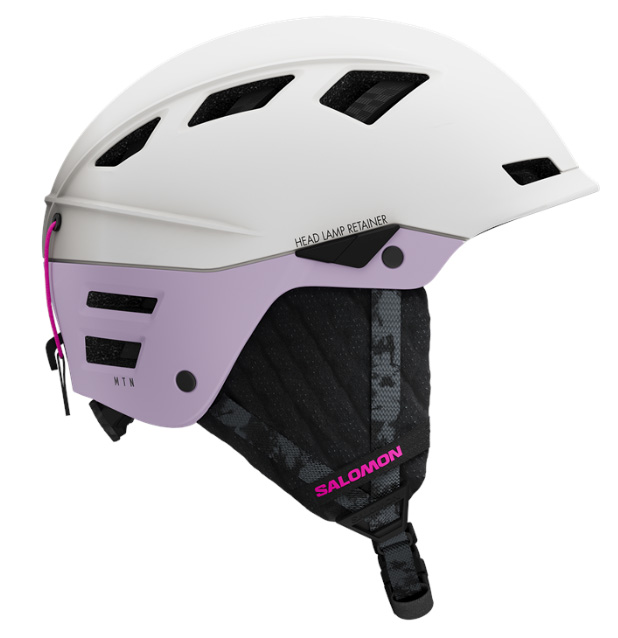 Construction: In-mold
Construction: In-mold
Weight: 12.9 oz.
Ventilation: Fixed (12 vents)
What we like: Competitively light, triple-norm certified, and comes with two wool liners.
What we don’t: Not super warm, vents can allow moisture inside, and pricier than the Movement 3Tech Alpi above.
Rated for both downhill skiing and climbing use, the Salomon MTN Lab is a backcountry standout. The helmet’s feathery 12.9-ounce weight is the third lightest on our list (behind the Movement 3Tech Alpi Honeycomb above and Petzl Meteor below), which makes it easy to wear all day or attach to a pack. Ventilation is also a strong point with 12 large cutouts distributed along the top and sides of the lid. And Salomon didn’t skimp on features with the MTN Lab: The helmet integrates well with our Smith I/O Mag goggles, the adjustment dial at the back is easy to use, and the two included merino wool liners (one lightweight and one winter-weight) are soft and cozy.
Updated a couple seasons back, the latest MTN Lab uses more recycled materials and is triple-norm certified for snow sports, climbing, and biking. For mountain missions that require every tool in the tool box, it’s a solid pick. Where the helmet falls short is for resort use: The minimalist padding isn’t as plush or insulative as most lids, and there’s no way to close the vents on particularly frigid or wet days (wearing a thin beanie underneath or putting our jacket’s hood over the helmet does help). Further, while the in-mold construction helps cut weight, it isn’t as durable as the ABS and hybrid designs here. But there's a reason we've kept it on our list: It's light, versatile, and easy to wear, making it another competitive option for backcountry enthusiasts looking for one lid to do it all.
See the Salomon MTN Lab Helmet
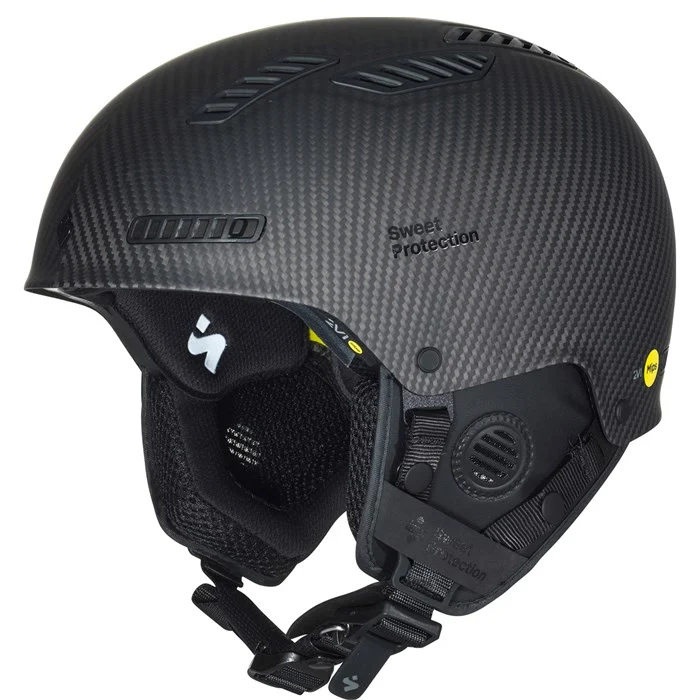 Construction: Hybrid carbon fiber shell
Construction: Hybrid carbon fiber shell
Weight: 1 lb. 6.2 oz.
Ventilation: Adjustable (10 vents)
What we like: A carbon fiber helmet!
What we don’t: Super expensive and fairly heavy.
Right off the bat, it’s readily apparent the Sweet Protection Grimnir 2Vi isn’t your average ski helmet. The shell is made with gleaming carbon fiber—it’s particularly impressive-looking in the “Natural Carbon” color shown to the right—and the price tag is a whopping $450. That’s $120 more than the next-most-expensive helmet on this list (the Smith Nexus above) and puts it in rarified air for an all-mountain/freeride design. What the carbon fiber build and unique two-layer MIPS system get you, however, is incredible strength and pro-level performance. For those who hit big mountain lines with a lot of exposure, the Grimnir may be worth a look.
It probably won’t come as a shock that the Grimnir 2Vi’s appeal is very limited. For one, the riders interested in this helmet likely find themselves in hairy situations rather frequently, and they may need to replace it after a crash well before the liner has worn out. Moreover, there isn’t a standardized test to prove that this carbon construction is actually safer than a similarly burly option like Smith’s Nexus above (which happens to cost $120 less). In the end, the Grimnir remains a niche product, but Sweet Protection does make the $250 Igniter 2VI MIPS, which shares a similar shape and fit but trades the carbon fiber for more practical ABS plastic.
See the Sweet Protection Grimnir 2Vi
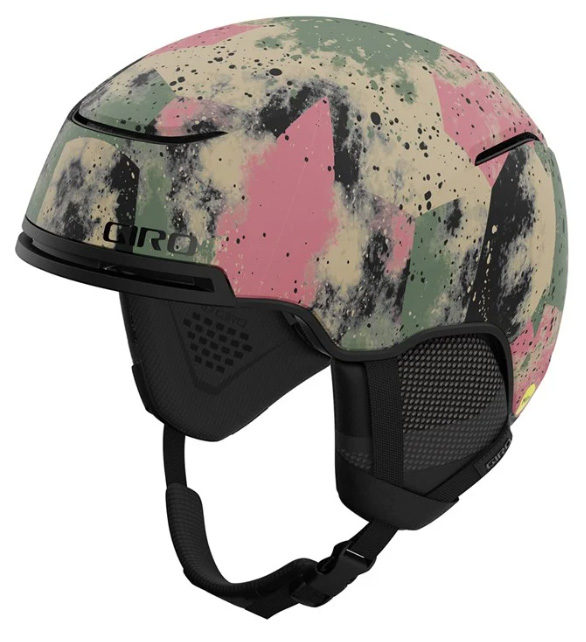 Construction: In-mold
Construction: In-mold
Weight: 14.1 oz.
Ventilation: Fixed (8 vents)
What we like: Minimalist looks, lightweight, and competitive price.
What we don’t: Non-adjustable vents means you can’t fully seal out the cold.
Giro’s Grid above is their high-end backcountry offering, while the Jackson MIPS here slots in below as a lightweight and more budget-minded option for resort and freeride use. They kept things pretty simple with a clean and minimalist exterior, low-profile in-mold construction, and lightly cushioned ear pads. But the details are really nicely sorted, including a highly adjustable fit system that can be shifted up and down to avoid a gaper gap with your goggles and the option to remove the aforementioned ear pads on warm days (or when touring). And with a weight of just over 14 ounces, the Jackson is light enough that you’re prone to forgetting you’re wearing it throughout the day.
Most fixed-vent designs do a bad job keeping you cool or dumping heat quickly, but the passive system on the Jackson is quite effective at drawing air from the front and out the back—even when standing still or working hard on a sidecountry hike. One limitation of the design, however, is that you can’t seal it closed. As such, in frigid temperatures or if strong, chilly gusts are hitting you hard, the helmet runs cooler than a model with an adjustable venting system (like Giro’s own Grid). In other words, the Jackson isn’t a great match for those who run cold, but for active resort skiers or those looking for an affordable sidecountry/backcountry lid, it’s well worth checking out.
See the Giro Jackson MIPS See the Women's Giro Terra MIPS
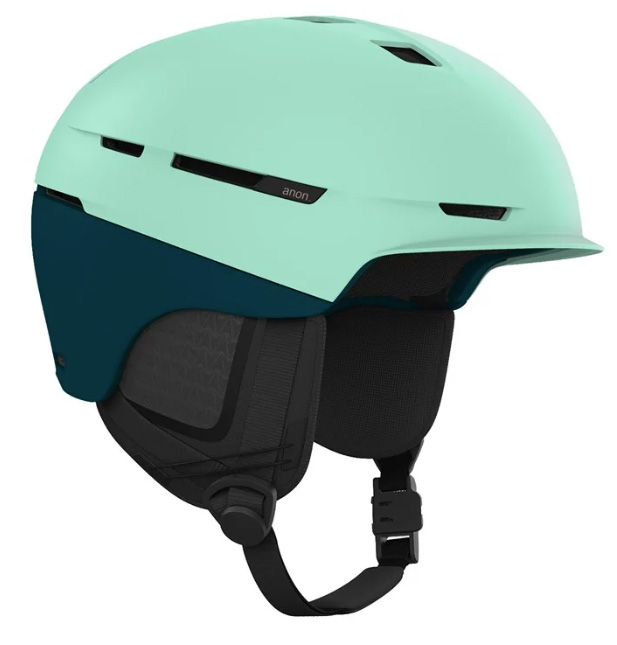 Construction: Hybrid in-mold
Construction: Hybrid in-mold
Weight: 1 lb. 4.5 oz.
Ventilation: Adjustable (19 vents)
What we like: WaveCel technology incorporated into a high-end build.
What we don’t: There are cozier and more well-padded options available.
First offered in Bontrager’s line of biking helmets, WaveCel technology made the leap into snowsports a few seasons back. In short, the cell-like structure aims to provide two main safety benefits: shock absorption in direct impacts and reducing rotational forces in an angled hit (like MIPS). Anon is the first to incorporate the tech and have included in their entry-level Windham ($190), mid-range Logan ($240), and high-end Merak ($320) models. The latter design also packs a number of extras that you’d expect for the price, including a hybrid in-mold construction for good durability, magnetic chinstrap, BOA fit system, and an adjustable ventilation design. It’s a little on the heavy end—our medium size tipped the scales at 1 pound 4.5 ounces—but it’s a formidable option for serious downhill and big-mountain riding.
In testing the Merak, however, a few complaints have emerged. The most significant is the padding design, which doesn’t protect you as well from the BOA fit system as we’d like. Cinching the helmet creates light pressure points at the sides of the head (the shape could’ve also been part of the issue, and the Merak seems to favor more of an oval-like head rather than round). Additionally, the minimalist padding meant the helmet ran on the cold side on frigid resort days, and the foam used around the ears muffles more sound than we prefer. Some will find these trade-offs worth it for the advanced safety tech, but we’d like to see some of the finer details sorted out before moving it up our rankings.
See the Anon Merak WaveCel
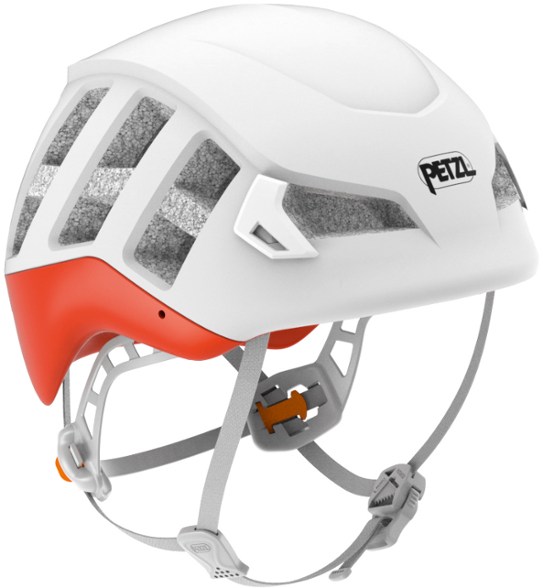 Construction: In-mold
Construction: In-mold
Weight: 8.5 oz. (M/L)
Ventilation: Fixed (23 vents)
What we like: An ultralight climbing helmet that’s CE-certified for ski touring.
What we don’t: Drafty and does not meet standards for resort skiing.
The Movement 3Tech Alpi Honeycomb and Salomon MTN Lab are two of the lightest ski helmets available at 12.6 and 12.9 ounces respectively, which makes them prime suspects for backcountry skiers looking to keep weight low. But for ski mountaineering and long tours, these lids are still on the bulky side. Enter the Petzl Meteor, an 8.5-ounce climbing-turned-ski helmet that’s truly in a class of its own. The Meteor is officially certified for ski touring (EN 12492), offering impact protection on both the top and sides of the head (most climbing helmets only guard against objects falling from above). It’s also fully compatible with goggles—including a rear elastic band built specifically for the task—and features glove-friendly adjustments at the rear.
But before you hit the skin track with the Petzl Meteor, it’s important to recognize its limitations. In particular, this helmet fails to meet standards for an alpine ski helmet, meaning that it doesn’t provide the necessary protection for inbounds skiing, big lines in the backcountry, and even some skimo races. Second, with 23 fixed vents and no ear pads, it’s decidedly drafty and lacks that cozy, secure feel you get with a standard ski helmet. In the end, the aforementioned 3Tech Alpi and MTN Lab are much more well-rounded options and will be worth the added ounces for many. But if you ski tour in the winter and climb in the summer, the Meteor is a do-it-all helmet that excels in both worlds. Finally, keep in mind that Petzl’s 6-ounce Sirocco is an even lighter ski touring-certified option, but it has less of a goggle-friendly shape and feature set.
See the Men's Petzl Meteor See the Women's Petzl Meteora
| Helmet | Price | Construction | Weight | Ventilation | MIPS |
|---|---|---|---|---|---|
| Smith Vantage MIPS | $275 | Hybrid in-mold | 1 lb. 2.0 oz. | Adjustable (21 vents) | Yes |
| Giro Ledge MIPS | $105 | ABS | 1 lb. 2.0 oz. | Fixed (8 vent) | Yes |
| Smith Level MIPS | $225 | Hybrid in-mold | 1 lb. 3.0 oz. | Adjustable (20 vents) | Yes |
| Movement 3Tech Alpi | $220 | In-mold | 12.6 oz. | Fixed (16 vents) | No |
| Giro Emerge Spherical MIPS | $160 | ABS | 1 lb. 1.6 oz. | Fixed (10 vents) | Yes |
| Smith Summit MIPS | $235 | Hybrid in-mold | 1 lb. 0 oz. | Fixed (33 vents) | Yes |
| POC Obex MIPS | $200 | Hybrid in-mold | 1 lb. 0 oz | Adjustable (11 vents) | Yes |
| Smith Holt | $65 | ABS | 1 lb. 4.0 oz. | Fixed (10 vents) | No |
| Pret Cynic X2 MIPS | $160 | In-mold | 15.8 oz. | Fixed (12 vents) | Yes |
| Oakley Mod5 MIPS | $270 | Hybrid in-mold | Unavail. | Adjustable | Yes |
| Giro Grid Spherical | $270 | In-mold | 14.1 oz. | Adjustable (16 vents) | Yes |
| Smith Nexus MIPS | $330 | Hybrid in-mold | 1 lb. 3.4 oz. | Adjustable (24 vents) | Yes |
| Glade Boundary MIPS | $199 | In-mold | 1 lb. 0 oz. | Adjustable (16 vents) | Yes |
| Oakley Mod1 | $105 | In-mold | 14.6 oz. | Fixed (6 vents) | No (available) |
| Salomon MTN Lab | $250 | In-mold | 12.9 oz. | Fixed (12 vents) | No |
| Sweet Protection Grimnir 2Vi | $450 | Hybrid carbon shell | 1 lb. 6.2 oz. | Adjustable (10 vents) | Yes |
| Giro Jackson MIPS | $190 | In-mold | 14.1 oz. | Fixed (8 vents) | Yes |
| Anon Merak WaveCel | $320 | Hybrid in-mold | 1 lb. 4.5 oz. | Adjustable (19 vents) | Yes (WaveCel) |
| Petzl Meteor | $95 | In-mold | 8.5 oz. | Fixed (23 vents) | No |
As snow starts to fall, many editors at Switchback Travel get giddy with excitement. Whether we’re lapping our local resort or skinning up steep slopes in the backcountry, we love getting outside in the winter and pushing our limits on skis and snowboards. A quality helmet is a must-have no matter where your winter adventures take you, which is why we kicked off this guide all the way back in 2015. Switchback founder David Wilkinson put together our initial selection of ten worthy designs and quickly looped in former editor-in-cheif John Ellings to further hone the list. Collectively, David and John have decades of experience skiing at resorts throughout the Mountain West and Pacific Northwest. Contributing editor Brooke Maushund joined the team in 2024 and now manages the guide. A lifelong lover of all things snow, Brooke has served as a ski patroller, guide, avalanche educator, observer, and avalanche forecaster in the snowpacks of Idaho, Patagonia, Washington, and the eastern Sierra.
Our current lineup of 19 ski helmets above is the result of ongoing testing, feedback from trusted contributors, and extensive market research. Given the increasing variety of styles and designs available, our picks above represent a wide range of options, from budget-friendly lids for infrequent resort riders to high-end backcountry offerings for committed uphill enthusiasts and ski mountaineers. To make our list, each helmet had to stand out in one or more areas, with many striking an effective balance between on-snow performance and price. Factors like weight, bulk, breathability, fit, and comfort all come into play when we're testing helmets, and we make sure to take the time to evaluate long-term durability, too. Rest assured, we will continue to update the list above as the market evolves, adding and removing options based on our experiences.
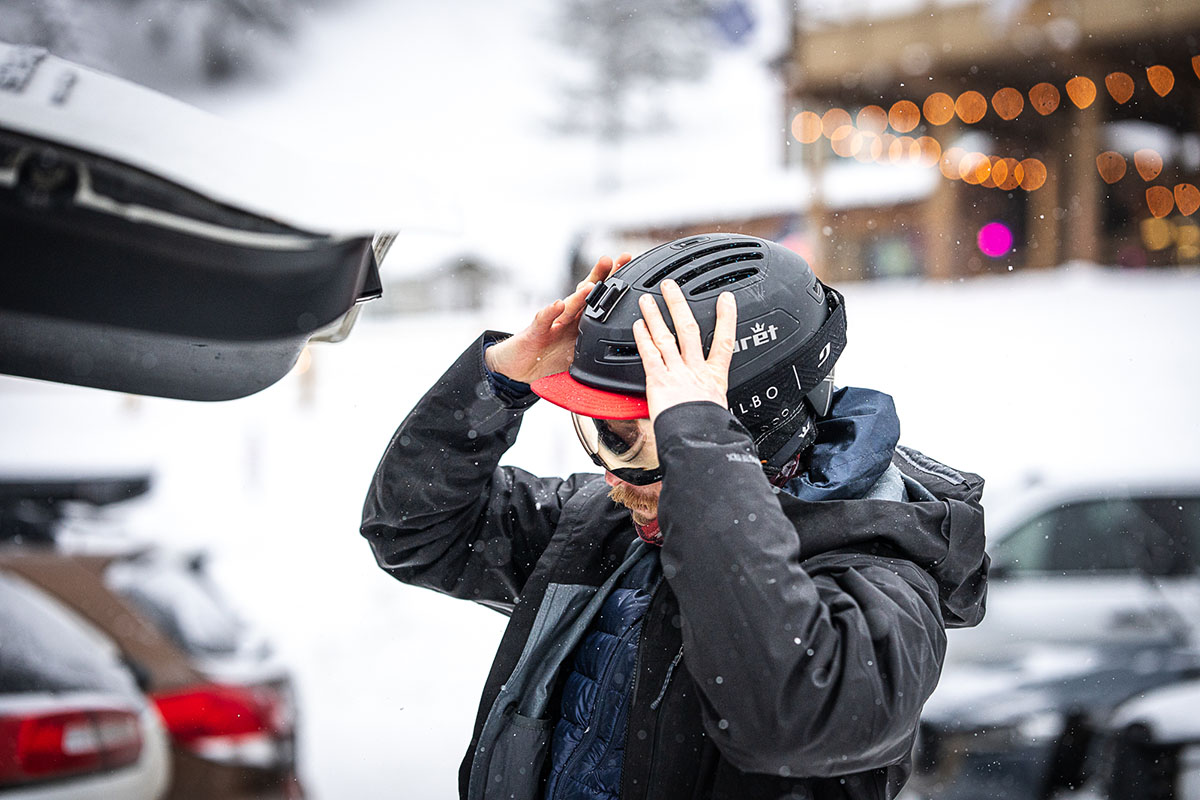
Construction styles for ski helmets can be broken into three general categories: ABS for the best durability, in-mold for the lightest weight, and hybrid in-mold for a nice compromise between the two. Below we break down the pros and cons of each type and who they're best for.
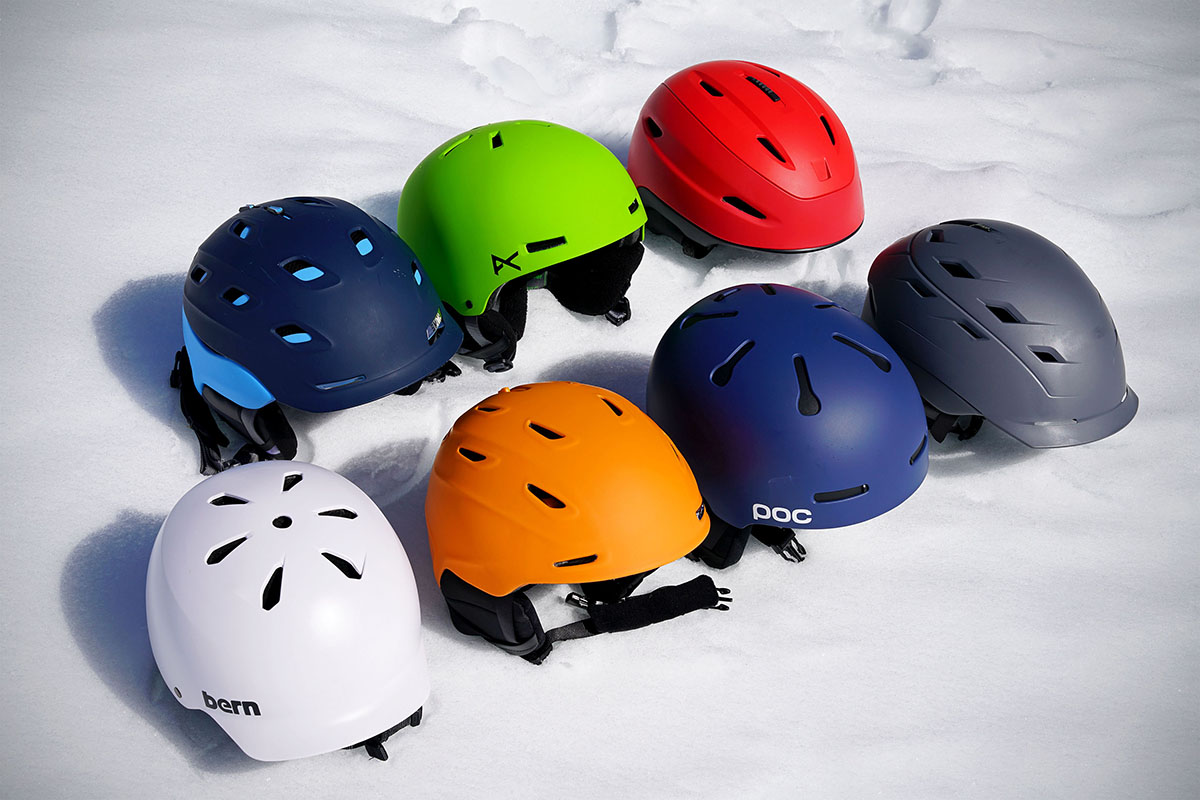
ABS
Diving a little deeper, ABS helmets like the Giro Ledge MIPS and Smith Holt are made in the traditional style with a hard plastic shell and a foam liner glued to the inside. The combination is simple but tough—ABS will scratch, but it's far less likely than other materials to show cosmetic damage like dings and dents. It’s also the most affordable helmet construction, and many ABS helmets feature all-season certifications for use while biking, skateboarding, or roller skating. The tank-like design does come at the expense of weight, bulk, and ventilation: put on an ABS helmet back-to-back with an in-mold or hybrid design, and the ABS model will look and feel more cumbersome. But given their strengths, ABS helmets are a great choice for everyone from beginner skiers and penny pinchers to those who are especially hard on their gear.
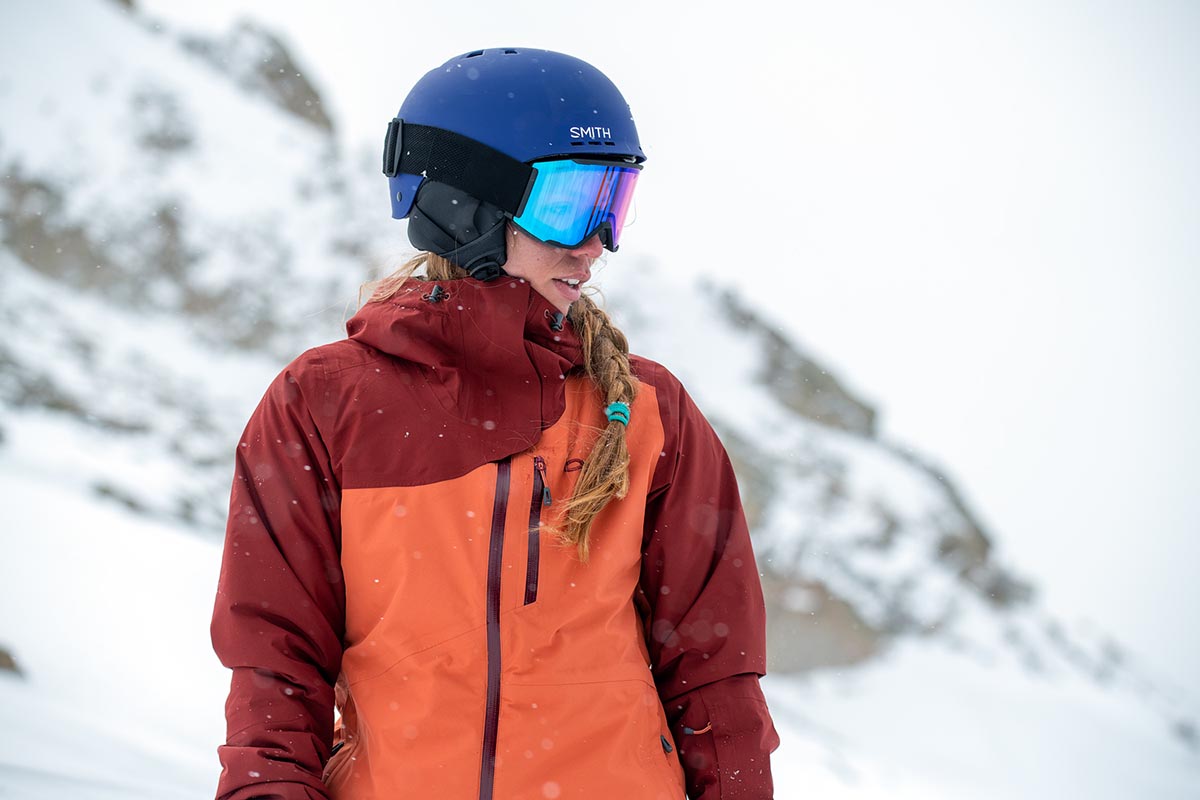
In-Mold and Hybrid
In-mold and hybrid in-mold technology is found on many mid-range and high-end helmets. In-mold construction combines a thin shell (often polycarbonate) with an EPS foam liner right from the start, and they’re molded together. What you get is an integrated piece, which cuts weight, adds a premium finish, and lets the helmet work as a single unit to absorb impacts. Ventilation also improves with these designs, although the degree to which it increases will vary by model and price. Some of our favorite in-mold designs are great crossover models for both resort and backcountry use, including the Salomon MTN Lab and Giro Grid Spherical.
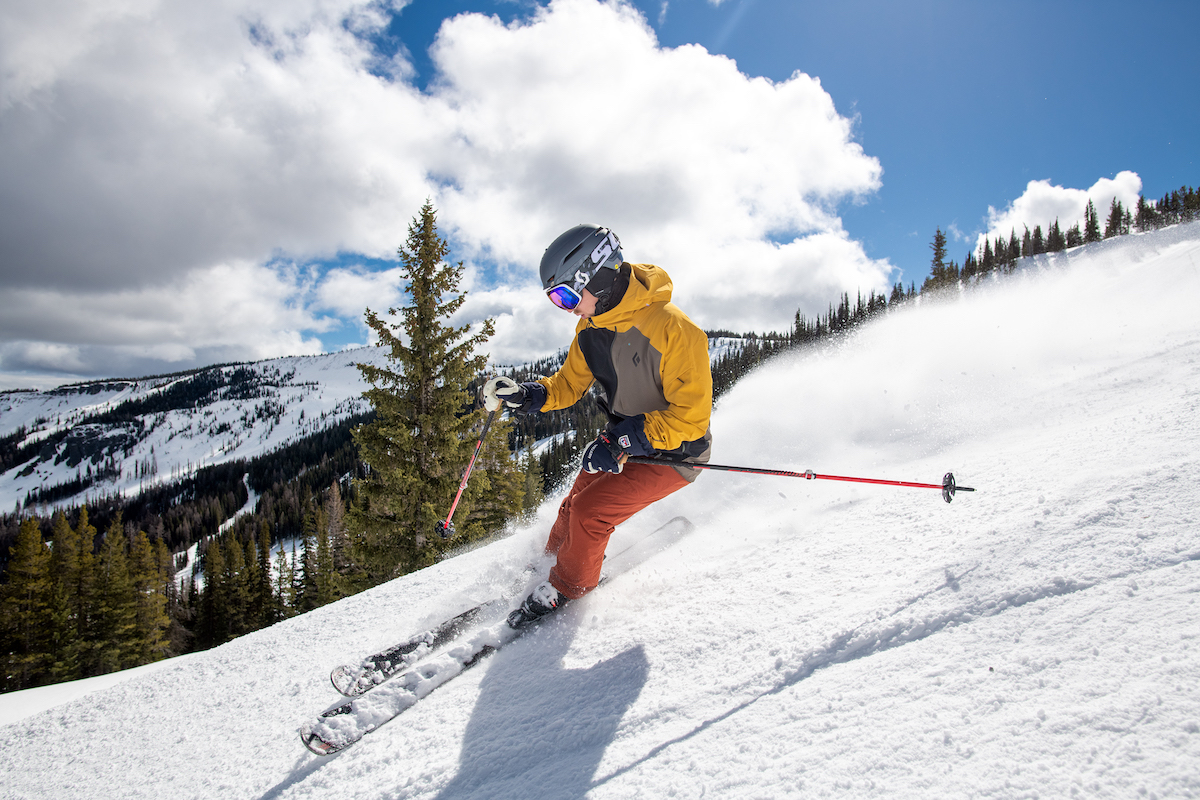
Durability is the primary downside to an in-mold helmet, and particularly protection against cosmetic damage like dings and dents. For this reason, hybrid helmets have grown in popularity. Hybrid in-mold designs add a hardshell layer (often along the top) for improved aesthetic durability. Because of the added material, they’re generally a few ounces heavier than standard in-mold designs but are a better choice for riders who really get after it in the park or on big-mountain terrain (or simply for those who want a quality build that should last a long time). However, their price, which is often $200 or more, puts hybrid designs out of reach for many occasional riders. A number of our top picks use this type of construction, including the Smith Vantage and Oakley Mod5.
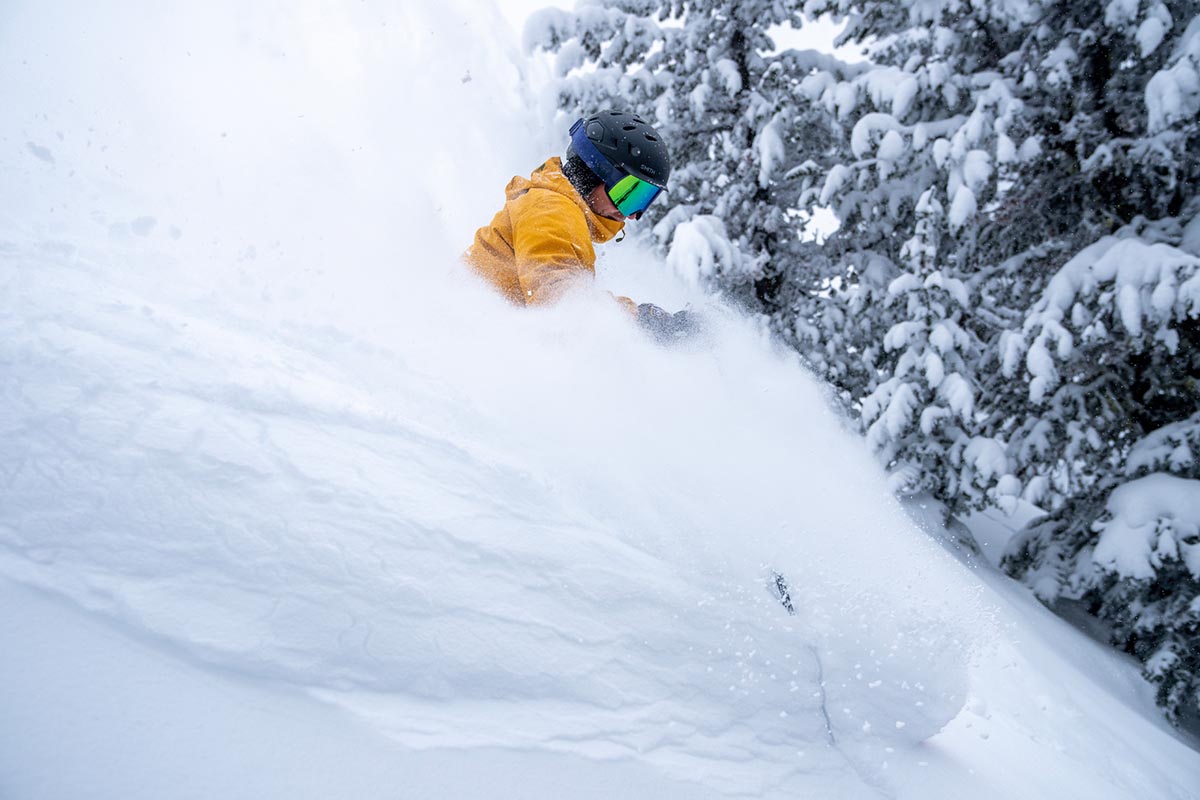
MIPS
In an effort to increase safety, many snow helmets offer protective features on top of the standard shell and foam combos mentioned above. Among these technologies, none has been so universally adopted as the MIPS (short for "Multi-directional Impact Protection System") liner. MIPS was designed to reduce damage to the brain in angled impacts (as might occur during a high-speed skiing fall or botched landing) through a liner that moves independently from the outer shell. We’ve taken the time to remove our MIPS liners and it’s impressively simple: A thin plastic layer connects to the helmet with a few small tabs and moves independently, keeping rotational impacts from passing onto the brain (note: MIPS strongly advises against removing the liner—we did so only for educational purposes). MIPS’ more premium Spherical technology (as seen on the Giro Emerge) uses two pieces of EPP foam in a ball-and-socket configuration to accomplish the same impact reduction.
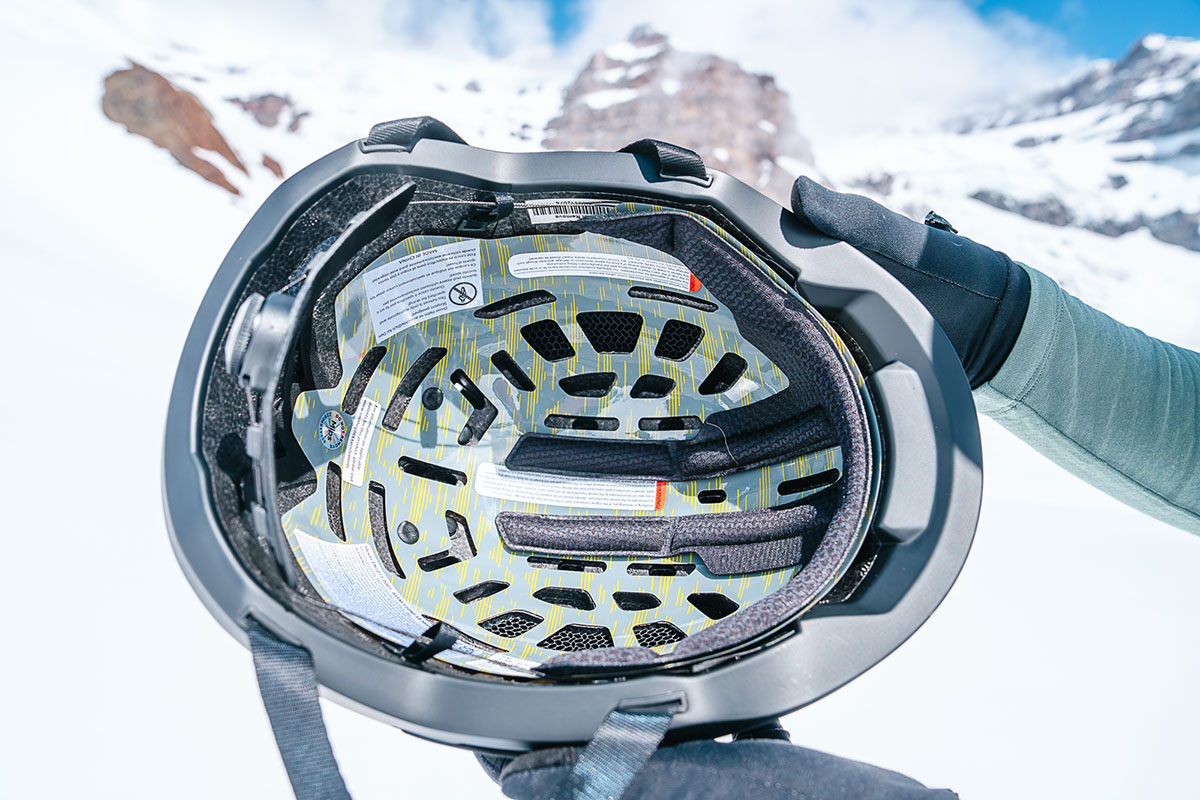
Beyond the formidable research that has gone into MIPS and comparable technologies, the beauty of the designs are that they have essentially no impact on comfort or the profile of the helmet. As such, you see MIPS being adopted on anything from Smith’s premium $275 Vantage all the way down to the $105 Giro Ledge MIPS. Some helmets we’ve tested do appear to fit slightly smaller as a result, but otherwise the impact is negligible. How often MIPS technology is a safety benefit is difficult to quantify, and we haven’t found any solid evidence-based research, but all indications point to it being a nice extra safety measure to protect your head (how much that’s worth is up to you). For more information on MIPS, we’ve found the technology page of the MIPS website to be a helpful resource.
Koroyd and WaveCel
In addition to MIPS, some helmet manufacturers have begun to replace standard EPS foam with cellular or honeycomb-like materials like WaveCel (found in Anon helmets) and Koroyd (Smith's solution). These materials have the ability to absorb more energy than EPS, all while minimizing bulk and weight and maximizing ventilation. WaveCel in particular is so adept at absorbing angled impacts and reducing rotational forces that current WaveCel-equipped lids forgo a MIPS liner. Koroyd has become ubiquitous in Smith’s designs (seen in the Vantage, Level, Summit, and Nexus above), and Anon now has a few helmets that use WaveCel. You’ll spend up for the extra tech, but many riders will appreciate the added assurance and boost in breathability.
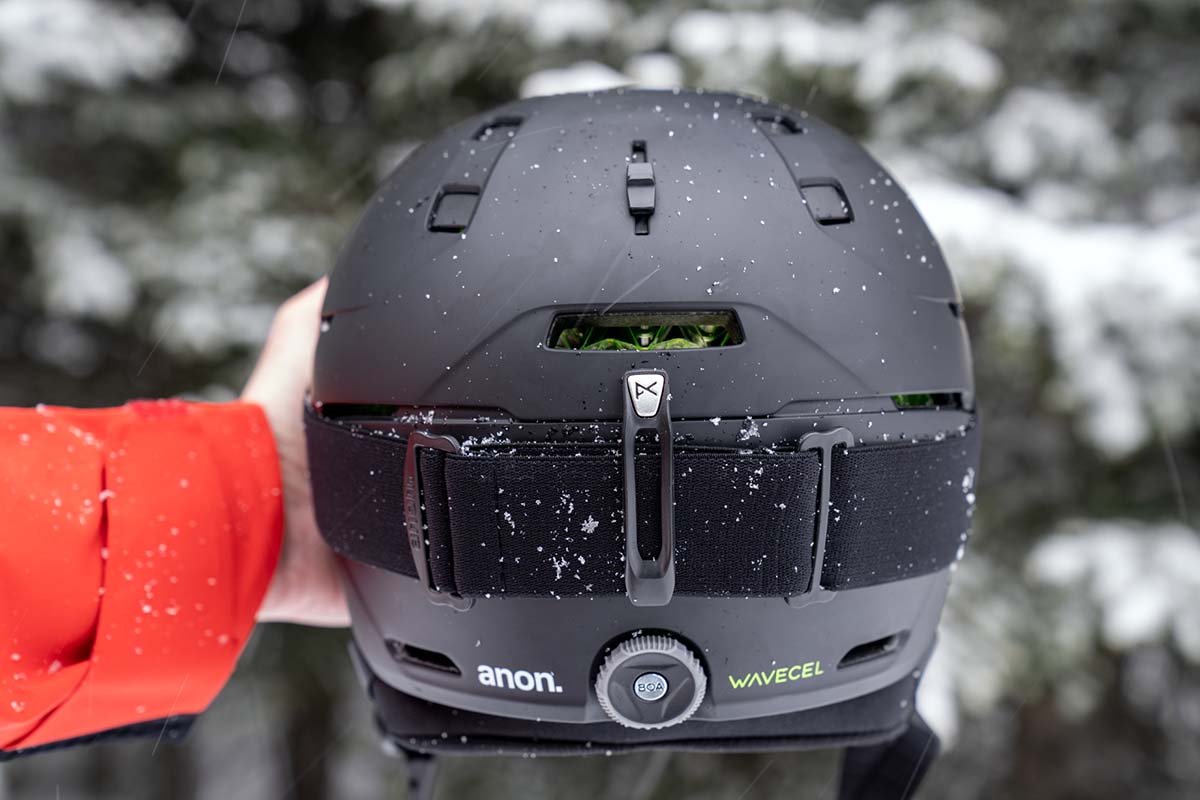
EPS vs. EPP Foam
A final safety consideration is the choice between EPS and EPP foam. Most snow helmets feature EPS foam, which is more affordable than EPP foam but also more brittle. When subjected to enough impact, EPS will crack, meaning these helmets will need to be retired after a fall. On the other hand, EPP foam springs back into shape after impact and can take multiple hits during its lifespan, making it a great choice for park rats and aggressive riders who subject their helmets to a lot of abuse. In addition, it doesn’t require an ABS or polypropylene shell to help distribute the force. We see EPP used a great deal in climbing helmets due to its lightweight construction (i.e., no need for a shell), but it has yet to become widespread in snow helmets. Most notably, it's used in MIPS's Spherical technology, which is featured in the Giro Emerge MIPS.
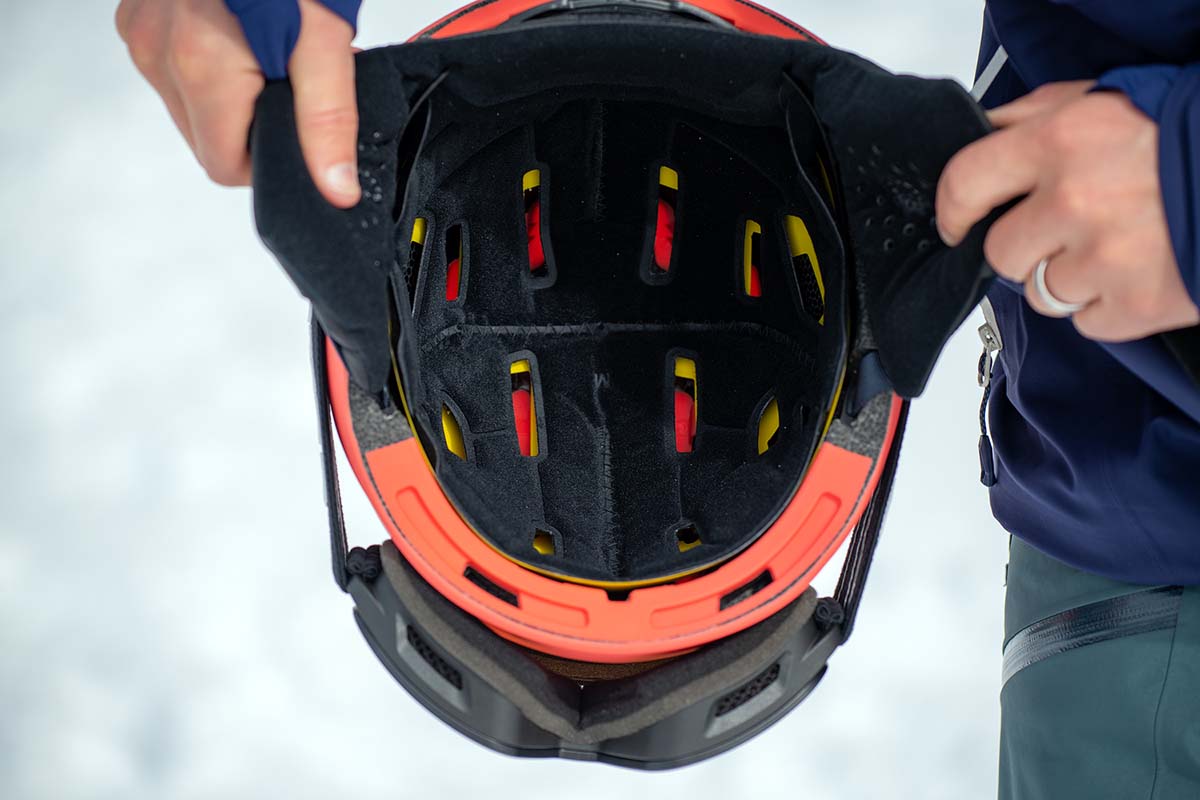
Tasked with keeping you safe from hard impacts on the hill, the helmets on our list have a non-motorized snow sports safety certification from US-based ASTM International. Despite construction differences referenced above, these helmets all follow a basic design with a shell exterior and impact-absorbing interior, and are appropriate for both skiing and snowboarding (you can find our dedicated list of snowboarding helmets here). If you’re headed to the slopes, it’s important that you use a helmet designed for the job (i.e., don’t use a mountain bike helmet for skiing), and refrain from using it for tasks outside of its intended use (such as snowmobiling). And of course, the onus is still, as it should be, on the user to ride within your limits.
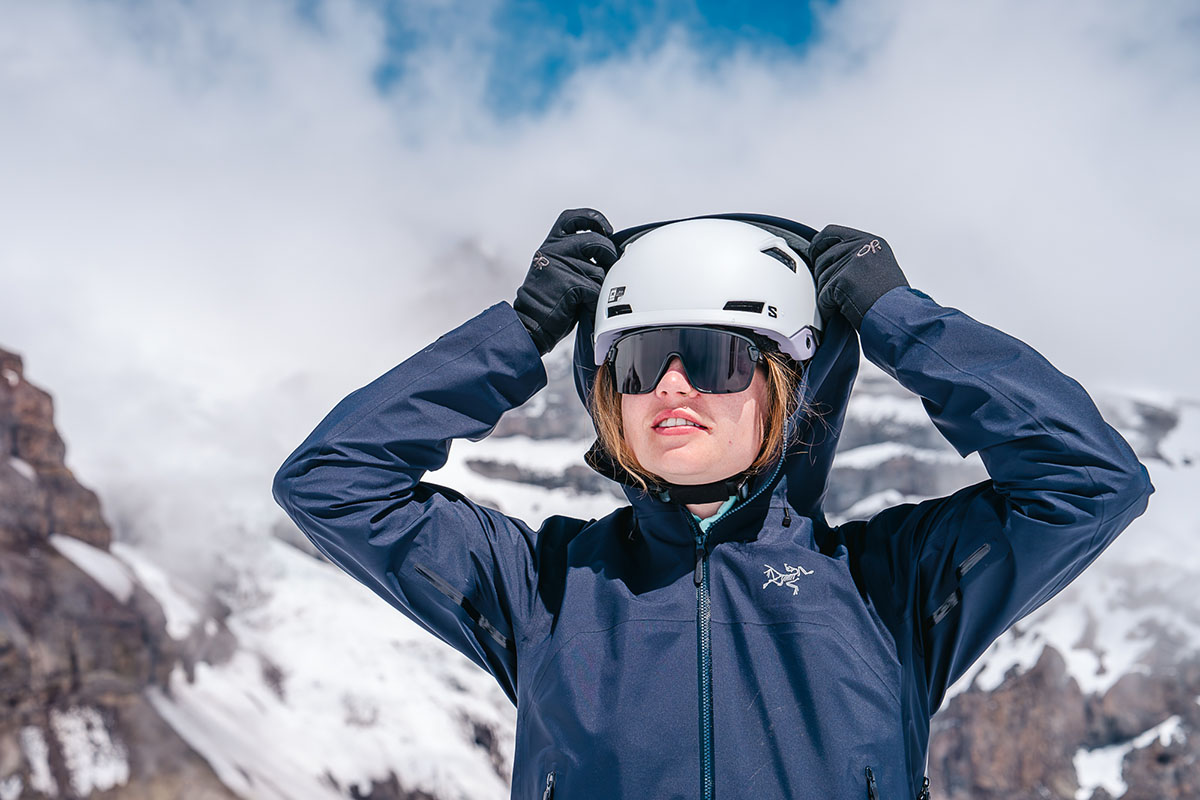
There are a few snow helmets that have multiple certifications for use outside of skiing. Helmets with climbing certification (EN 12492) offer an increase in protection from falling objects (from above) in addition to impact protection at the front, rear, and sides. If you’re a skier who ventures into the backcountry or deep into the mountains, you’ll want to look for a helmet certified for both snow sports and climbing (the Movement 3Tech Alpi, Salomon MTN Lab, Smith Summit, and Petzl Meteor are popular options). And good news for uphill athletes: These lids all feature lightweight and breathable designs for great performance on the skin track or boot pack.
Finally, helmets with an all-season certification (EN 1078) will be of particular interest to freestyle-oriented skiers who spend the warmer half of the year riding bikes, skateboarding, or roller skating. These designs, like the Smith Holt and Scout ($110), are often built with a solid ABS shell that can take a beating on the pavement. Like most snow helmets, they also feature removable ear pads, which is essential for summer use. A few in-mold helmets are also triple-norm certified, including the aforementioned MTN Lab and Summit. Because of their fragile constructions, we don’t recommend these lids for dedicated use around pavement, but for mountain missions that require a mix of biking, skiing, and climbing, they're without rival.
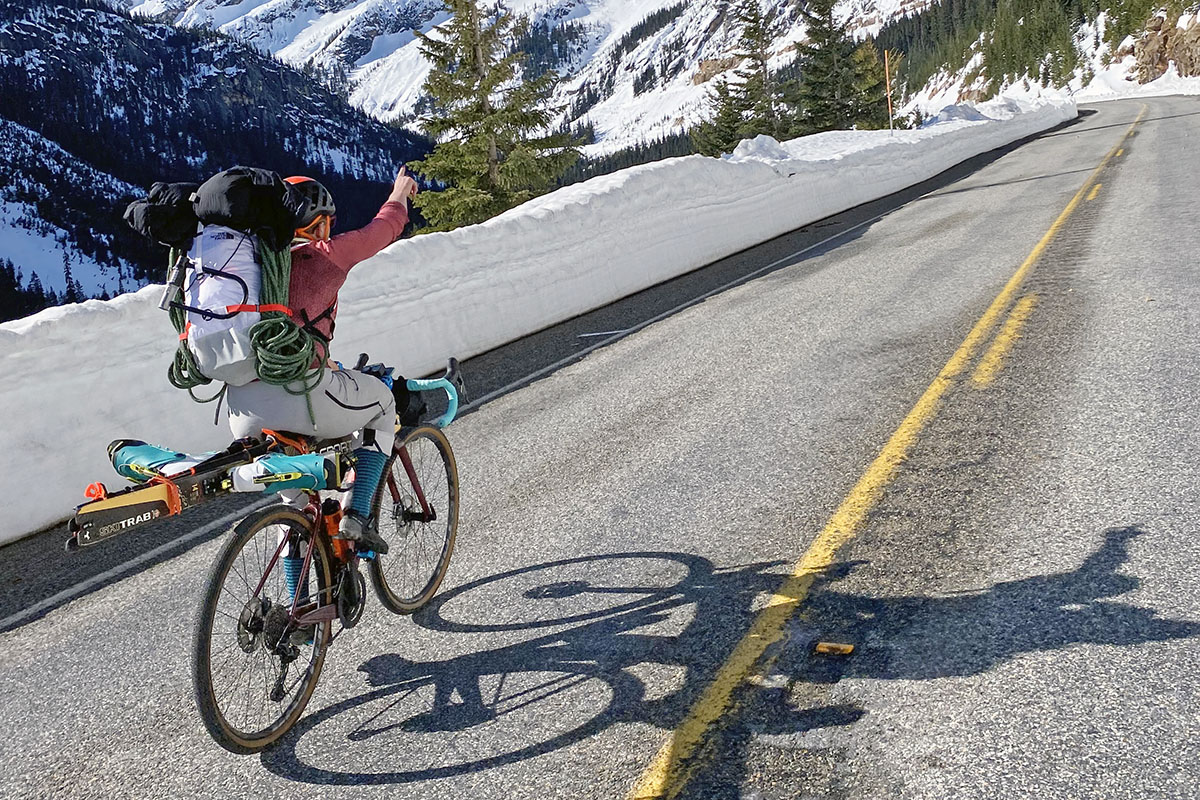
We place a high priority on ventilation. Throughout the course of an average resort day, we open and close our vents on multiple occasions as we hunker down on a windy lift ride or heat up on a sidecountry hike. The technology behind keeping you at a comfortable temperature isn’t as simple as putting a bunch of holes in the helmet—that winter air is rather cold and can lead to dreaded brain freeze when you are trying to let out some steam.
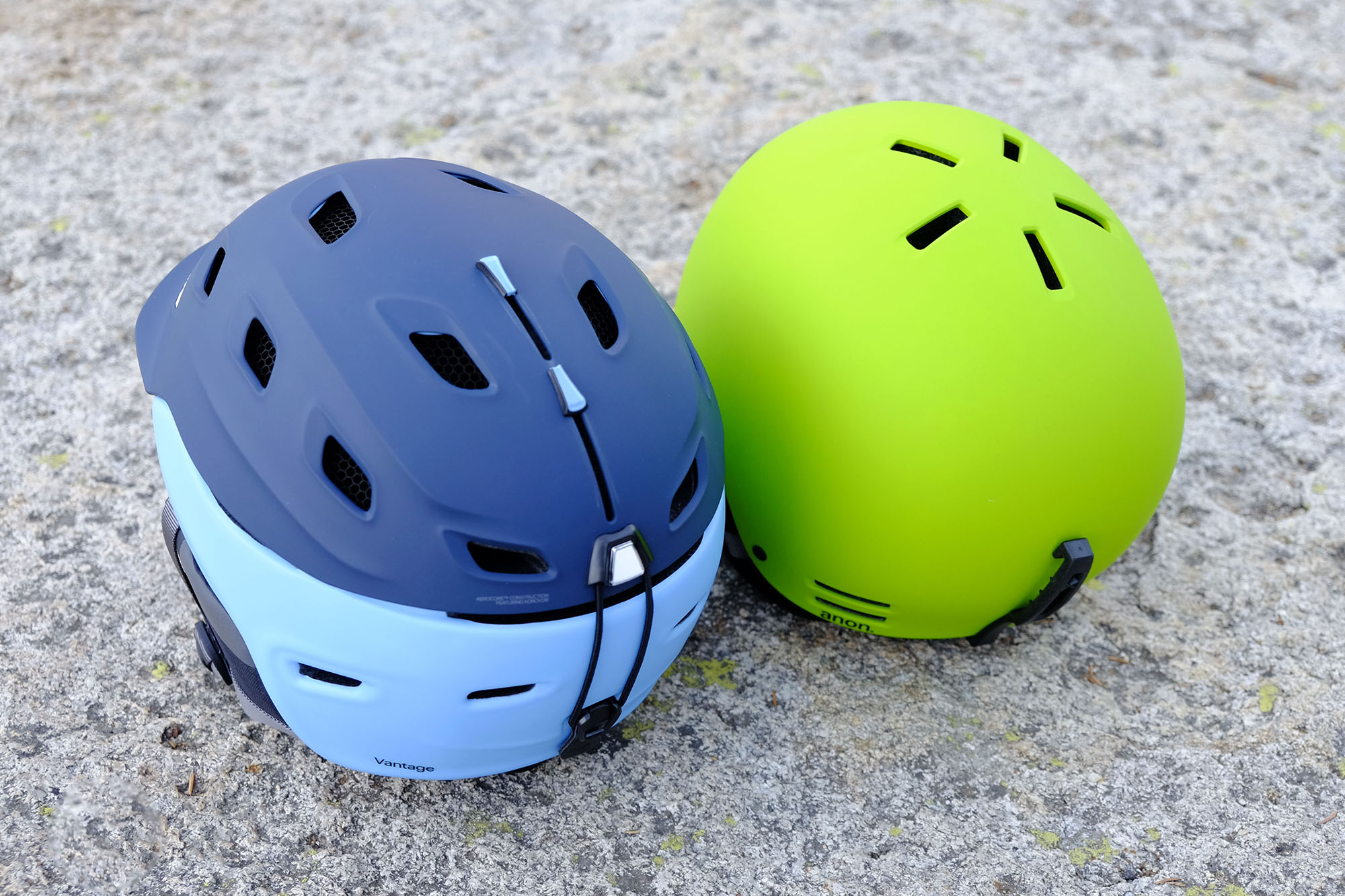
First, look at the number of total vents of the helmet (we’ve provided this information in the specs for each helmet and in the comparison table above). Not all vents are created equal, but this number gives you a good starting point as to how much ventilation the helmet offers. To be sure, there is a correlation between the number of vents and cost of the helmet. One of the best ventilators, the high-end Smith Vantage, has an impressive adjustable 21 vents, while a budget model like the Oakley Mod1 only has six small fixed openings.
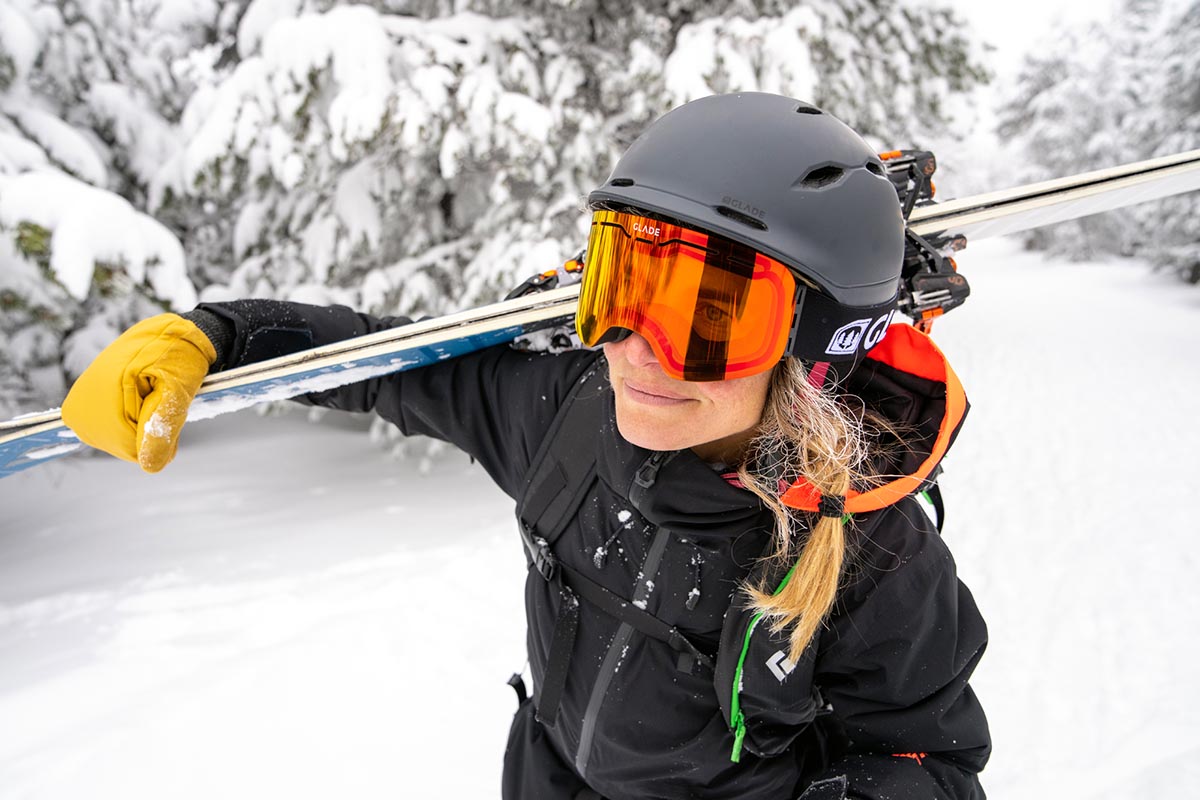
Then you have both adjustability and design considerations. Many premium and mid-range helmets have adjustable vents that can be opened and closed depending on the preferred amount of air that you want to let through. Adjustability is highly preferred over static vents. And effective designs direct air through intakes at the front and “exhaust” the heat out the top and back. Budget helmets often have fixed openings that cannot be shut, although a well-designed passive system can still do a decent good job regulating your body heat. For long uphill slogs, you may need to ditch the helmet altogether, although we always recommend dealing with the heat if there is a chance for rock fall.
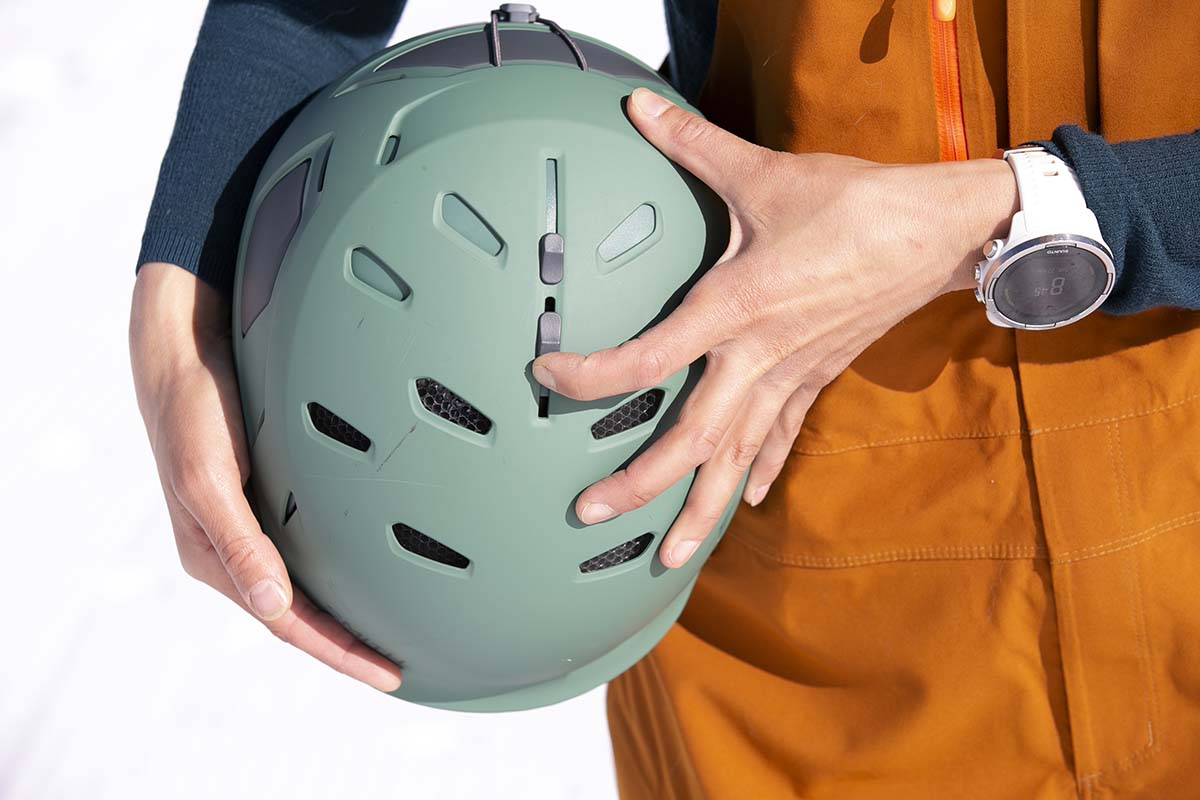
Liner comfort is one of the most noticeable differences when comparing budget models (typically under $120) with mid-range and high-end ski helmets. Pricey options like the Smith Vantage, Oakley Mod, and POC Obex feature padding along the interior that balances softness with support, and if you nail the fit, you’ll hardly notice the helmet throughout the day. Cheaper designs often have squishy foam that packs out over time, feels uncomfortable if you wear it all day, and muffles sounds (for the foam in the ear pads). For these reasons (and more), we recommend spending up if you plan to get out a lot in the winter. Like an uncomfortable pair of ski boots, you’ll notice it if you don’t.
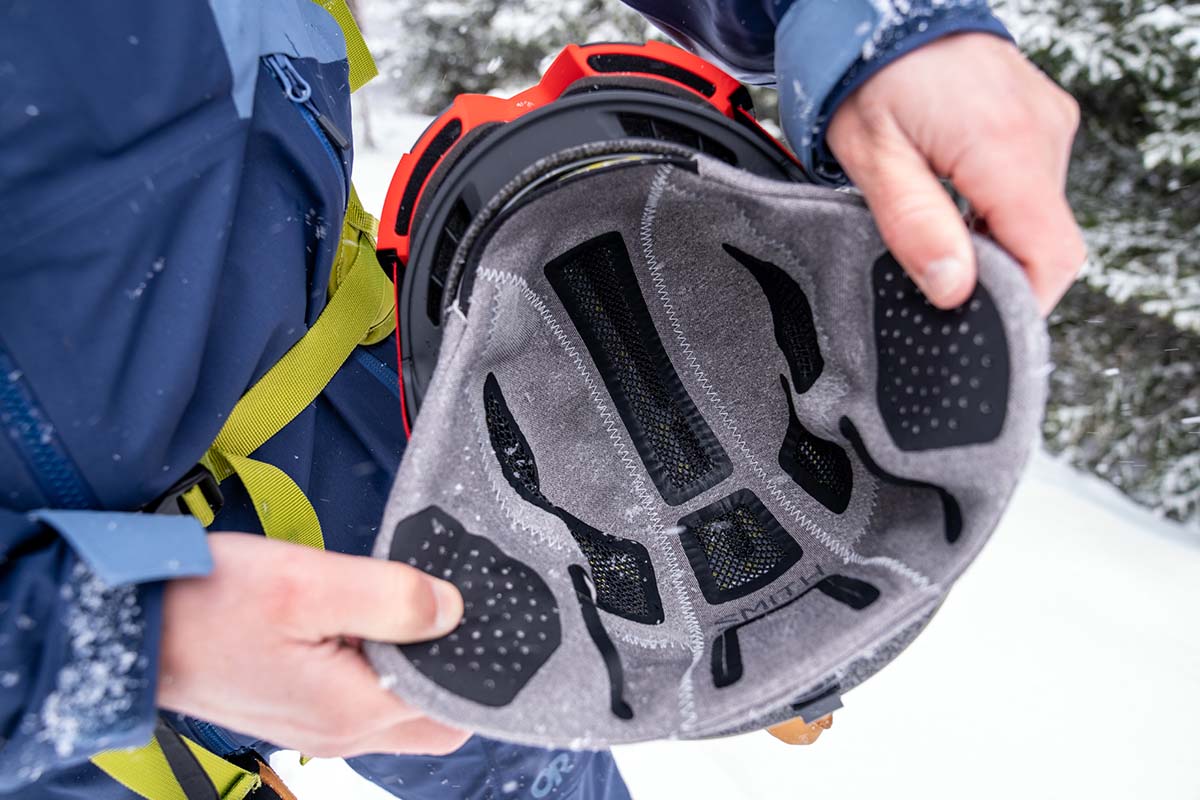
In addition to comfort, your liner can be a great source of insulation. In our experience, a quality design like what’s included with Smith’s Level offers about as much warmth as a midweight winter hat (we’ve been comfortable wearing the Level down into the single digits). Spending up often gets you better insulation, while sticking with a cheap lid can lead to issues with warmth (especially around the ears). Finally, keep in mind for particularly frigid days or if you’re prone to running cold, you can slip on a beanie underneath (just make sure to choose a helmet size that can accommodate the extra thickness).
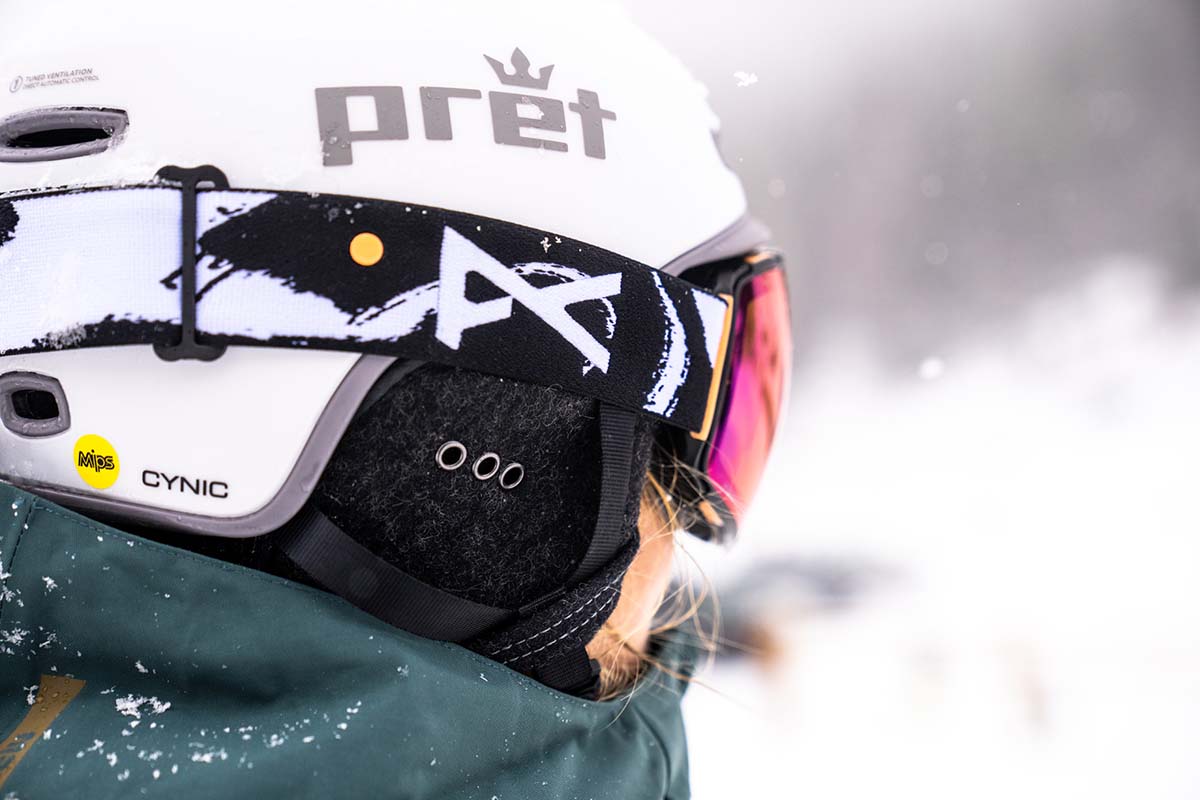
Within their specific construction type—ABS, in-mold, or hybrid in-mold—most ski helmets weigh approximately the same. For our medium-sized helmets we tested, that’s 14 to 16 ounces for in-mold, 17 to 19 ounces for hybrid, and 20+ for ABS. And between categories, there are noticeable differences in how they feel—in-mold and hybrid helmets are less prone to feeling heavy during a long day on the hill. However, simply putting a helmet on a scale won’t tell you the whole story of how it feels on your head. Good padding and a snug but comfortable fit can easily make up the difference of a couple ounces. It’s one of many reasons we love the Smith Vantage. It’s not the lightest, but you’ll quickly forget its there.
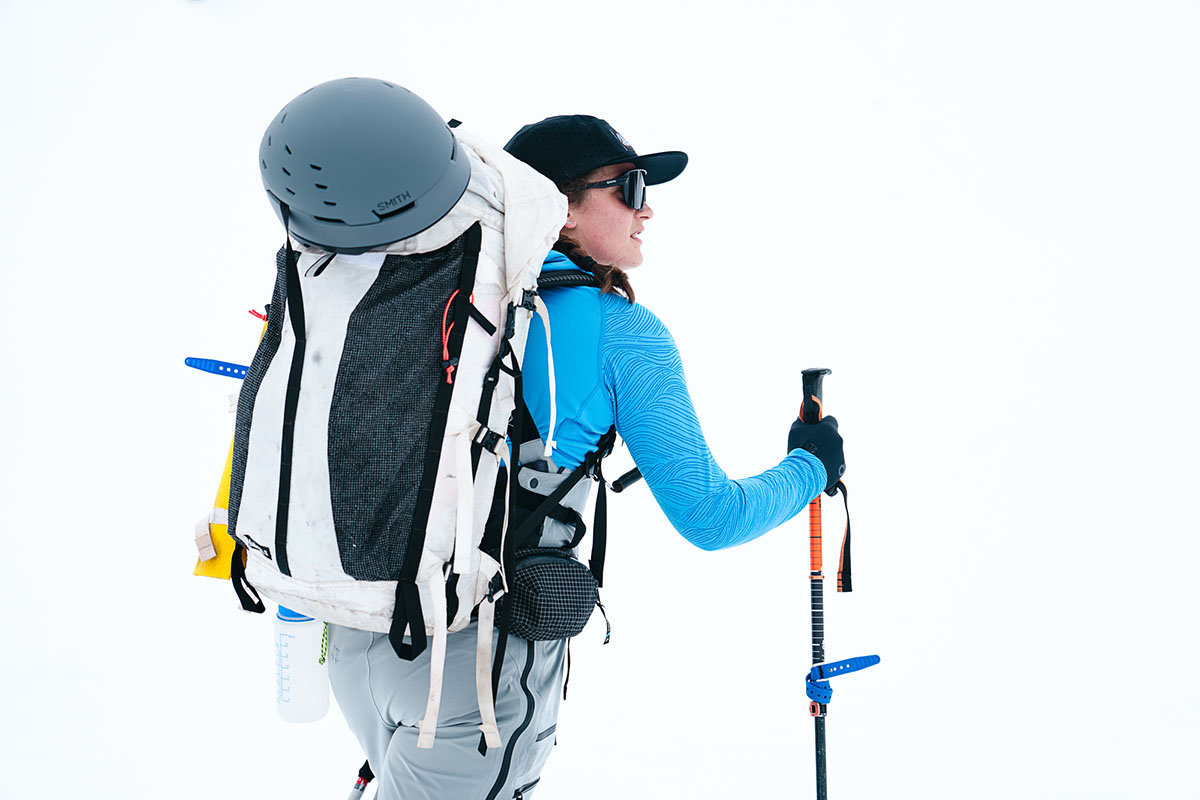
The bulkiness of a helmet plays into this perception of weight. Cheap helmets made with a basic ABS construction are thick and feel cumbersome. The Smith Holt was the worst offender from our list, but it’s still much better than even cheaper helmet options. In contrast, our top picks all have a low-profile fit and don’t feel like you’re hauling around a heavy appendage.
Goggle Retainer Clips
Goggle retainers are a simple but appreciated feature. The built-in clip holds goggle straps in place and helps reduce the risk of losing your ski goggles in a crash or otherwise. Designs do vary some: Many budget helmets use a simple plastic piece that flips open, while higher-end helmets will have a more secure strap or cord design. Pricier models are typically a little more confidence-inspiring and easier to manipulate—particularly without removing the helmet—but all the designs we've tried perform their intended function.
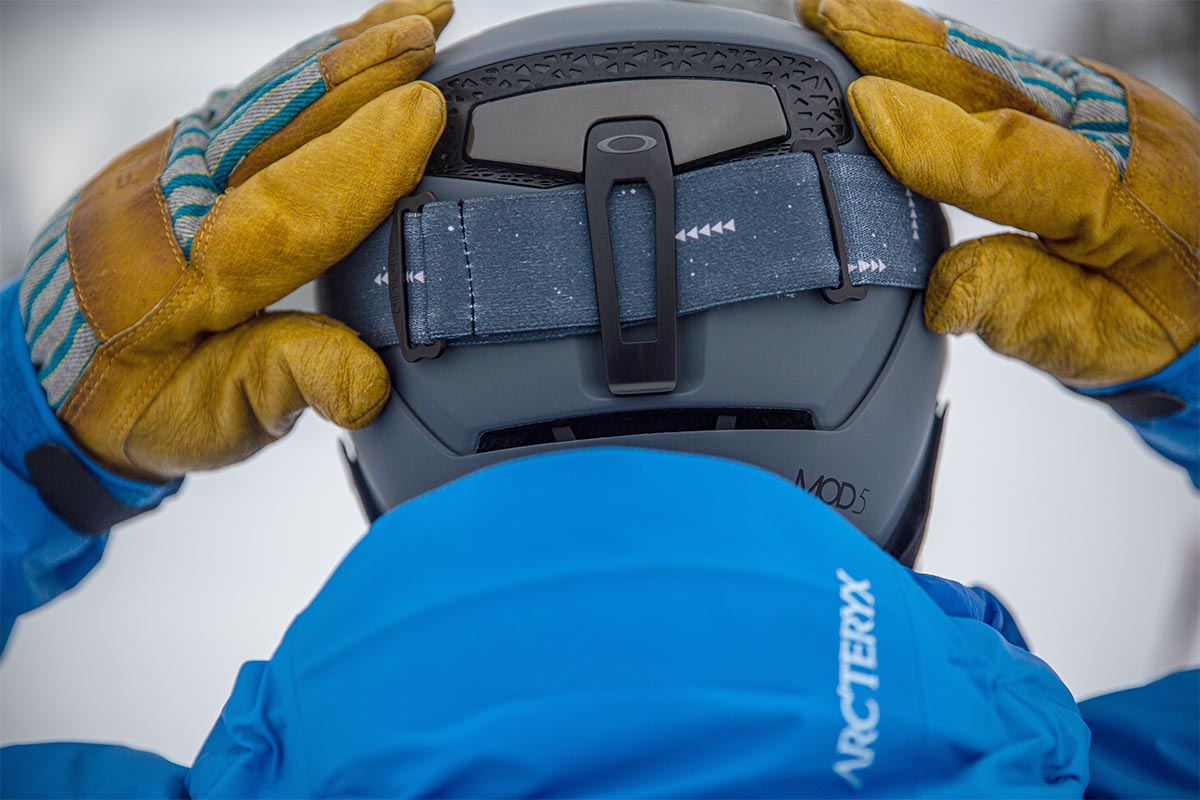
Chinstrap Buckles
For securing a chinstrap, ski helmets fall into two camps: traditional side release buckles and magnetic systems. We’ve found both designs are fully functional and wouldn’t necessarily make a buying decision based on this feature. That said, there are a few pros and cons of each to consider. Starting with the side release buckle, this proven method is secure—pinch to release and push to lock into place—easy to use with bare hands, and relatively low-profile. But the buckle is difficult to pinch with gloved hands, which is where the magnetic system comes into play. Fidlock is the leader here, and we’ve found their magnetic designs to be moderately more convenient—just get the two ends close enough and they’ll snap into place—and haven’t had any issues with failure or an unexpected release in a crash. In general, you’ll spend up for a magnetic buckle, although the $105 Oakley Mod1 is a notable exception.
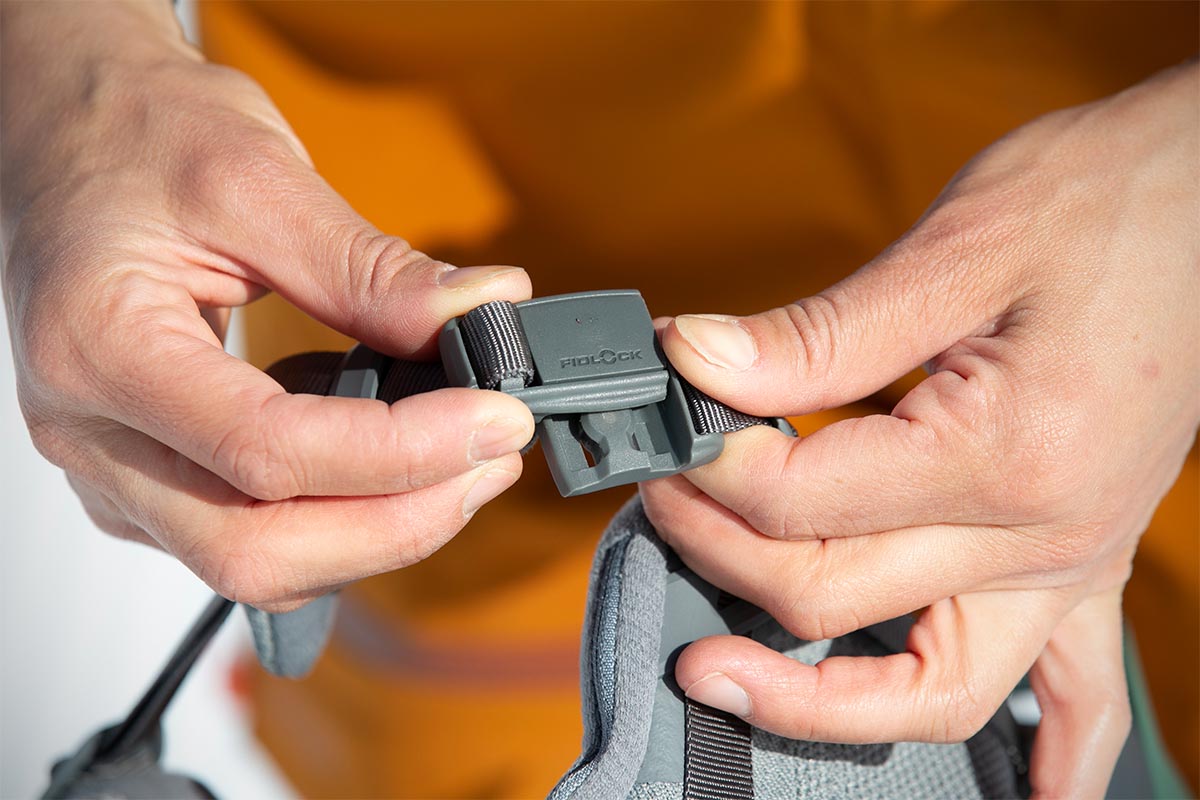
Audio Compatibility
Most helmets are compatible with some sort of audio system. For example: Smith and Giro work well with Outdoor Tech's Chip systems. In both cases, the ear cups have a built-in pocket that can accommodate speakers. “Audio” helmets like POC's Communication line will have integrated speakers and a cable to attach to a phone or music player. If you go this route, plan on spending a little extra to get quality speakers and reliable electronic hardware. Simply put, cheaper options don’t sound as good and are prone to failing. While skiing, it’s always a good idea to keep the volume down or have speakers that are non-noise cancelling for safety—we can't say we recommend skiing with headphones in, despite the popularity. While it may impact sound quality, the safety trade-off of being able to hear other skiers or someone shouting at you is a net win.
Action Camera Mounts
Bringing a camera along while skiing provides the opportunity to record ski runs, tricks, and just general fun on the mountain. GoPros have become the tool of choice for filming while in motion, and the good news is that most come with adhesive mounts that can be affixed to pretty much any helmet on the market. Some models go a step farther and come with a GoPro-compatible mount to make it easier to take the camera on and off.
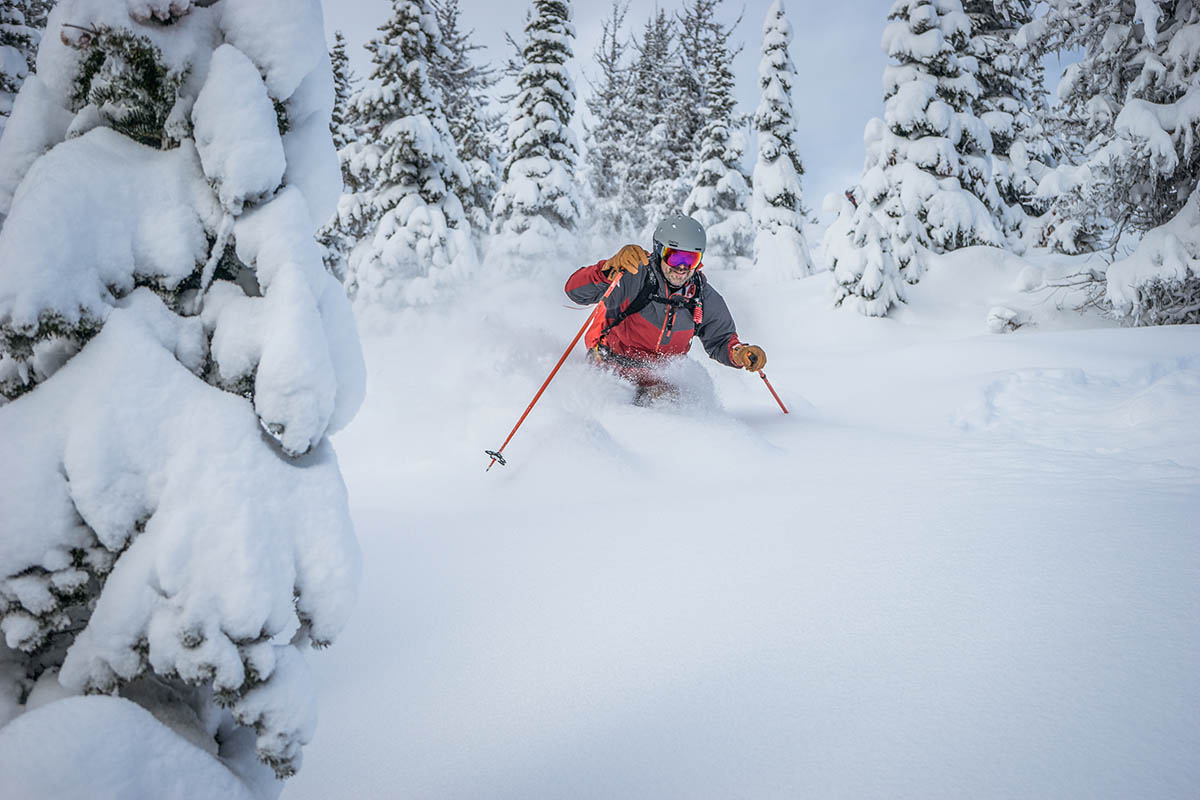
Getting sized for safety gear isn’t a good time for guessing, so if you don’t already know it, measure your head circumference prior to making an online purchase. All you’ll need is a soft-sided measuring tape or string: Wrap it around your head about an inch above your ears and eyebrows to get your number (in centimeters). As long as the manufacturer is close in their listings—the only discrepancies we’ve seen recently are the smaller-fitting MIPS helmets referenced above—this should get you a decent fit. Checking out a ski helmet sizing guide can help, too.
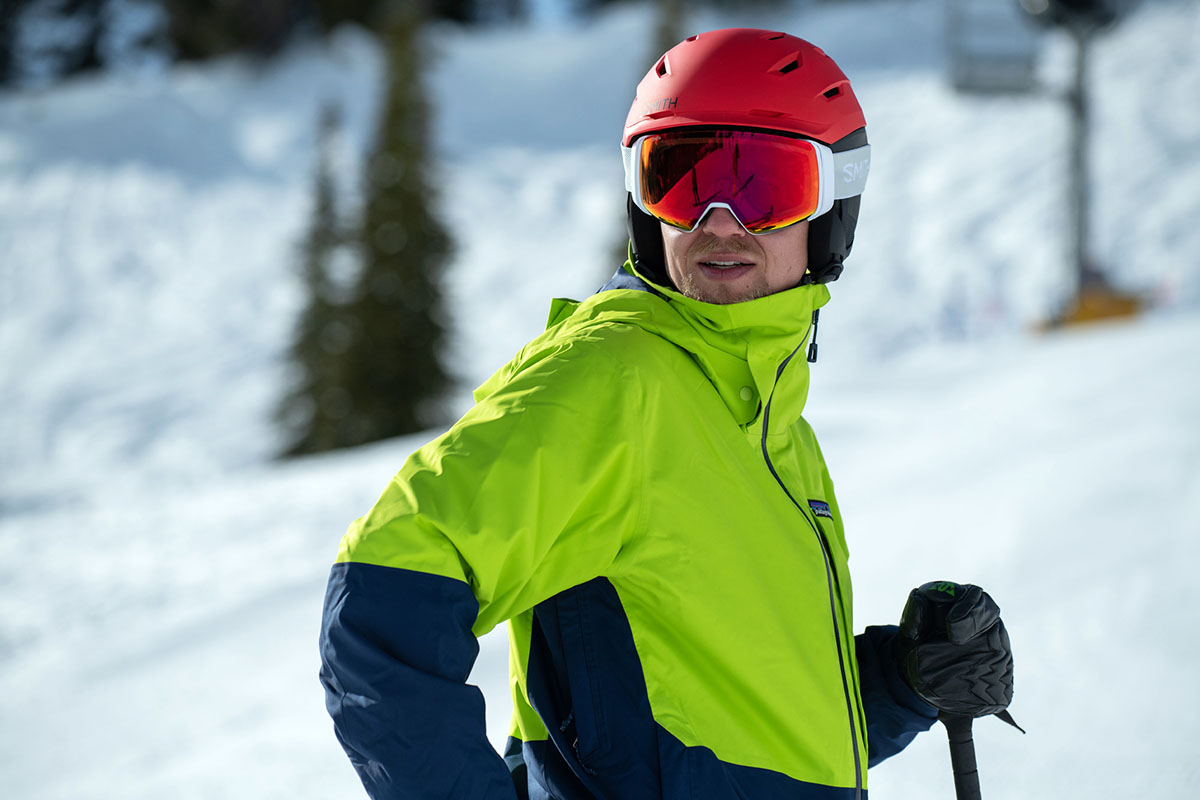
But to go from a decent fit to a great fit, we recommend popping into your local ski shop to try on a variety of helmets. Helmet shape and fit can vary across the board—both between brands and between models—and it’s possible that any given design simply won't fit your head shape. We've made sure to call out the various fit discrepancies in the write-ups above, but there's no substitute to trying on each helmet for yourself. To maximize compatibility, many of Smith’s helmets come in two different fits: a standard fit and their “Round Contour Fit” that accommodates rounder head shapes with more width at the rear and a shorter length. From our list above, these include the Vantage, Level, and Nexus.
There are a few final factors to keep in mind when dialing in a proper fit. For one, we strongly recommend opting for a helmet with a BOA dial (or similar technology). Some designs, like the Giro Emerge, use adjustable padding instead, but there’s simply no substitute for the wraparound cinch of a rear dial. Second, if you see a helmet that claims to be one-size-fits-most, we advise steering clear even if your head circumference falls within the listed parameters. Something so accommodating just won’t fit as well as a more fine-tuned size.
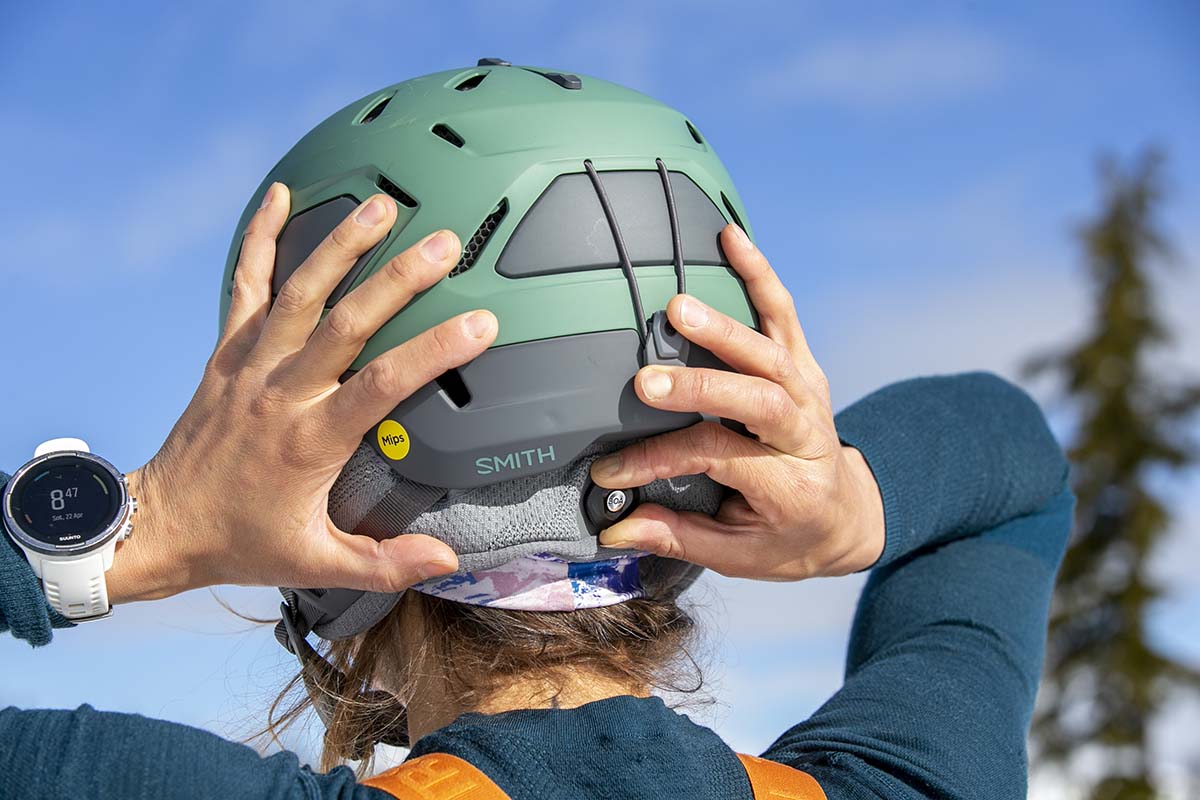
As with getting that perfect helmet fit, goggle compatibility is something that’s easiest if you can try them on. An ill-fitting helmet and goggle system can either be too tight, which pushes the helmet up and the goggles down your nose, or too open, leaving some of your forehead vulnerable to the cold air. The easiest way to guarantee a good fit is to stick within the same brand—Smith helmets work great with Smith goggles, and the same goes for Giro and POC—but we encourage you not to limit yourself if there’s a goggle or helmet that’s caught your eye.
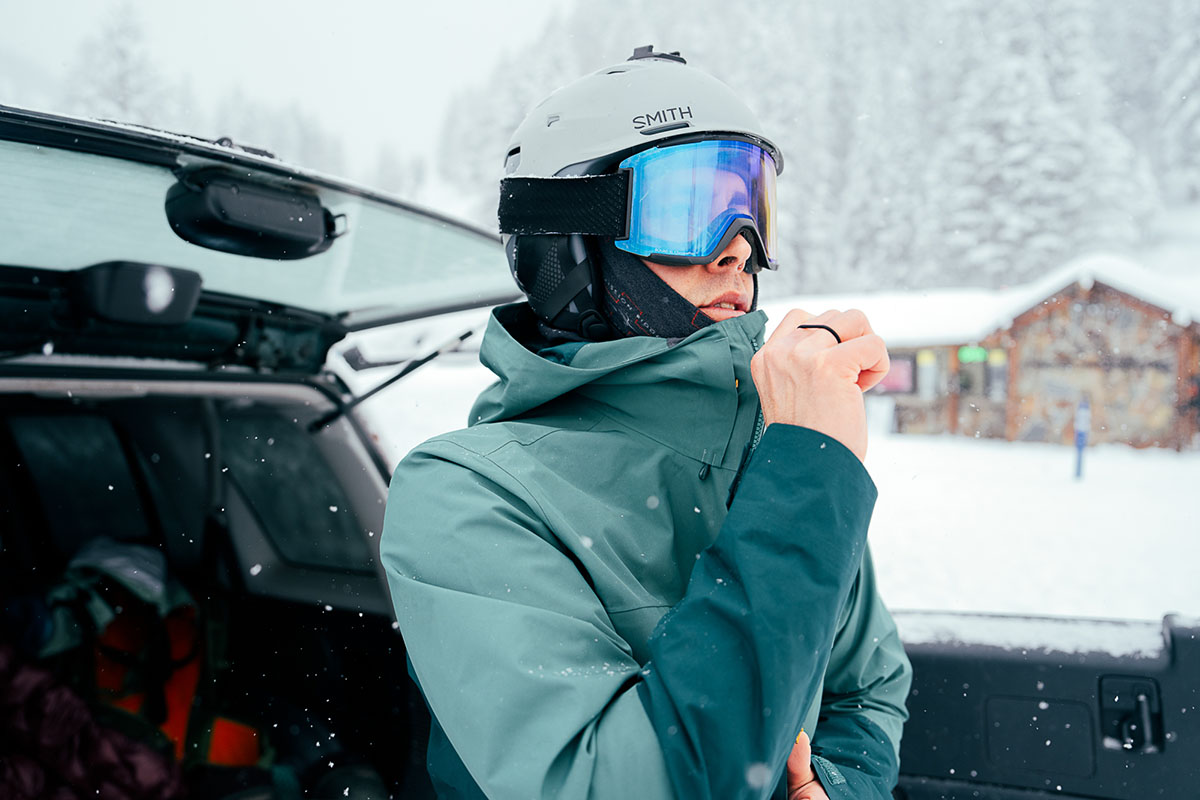
In testing, we’ve found some helmets are extremely accommodating of a variety of goggle types. The first-generation Oakley Mod5's swappable brim made it the most compatible with a range of brands and sizes (Oakley unfortunately discontinued the tech with the second-gen Mod5). And Giro’s helmets not only work well with all Giro-branded goggles, but we’ve also found that many provide an excellent fit for anything from the large Anon M3 or Dragon X2 to the classic Smith I/O Mag. Smith’s popular Vantage and Level helmets are also reasonably accommodating, fitting big-sellers like the Oakley Airbrake and Flight Deck, but we had issues with tall frames like the Dragon X2.
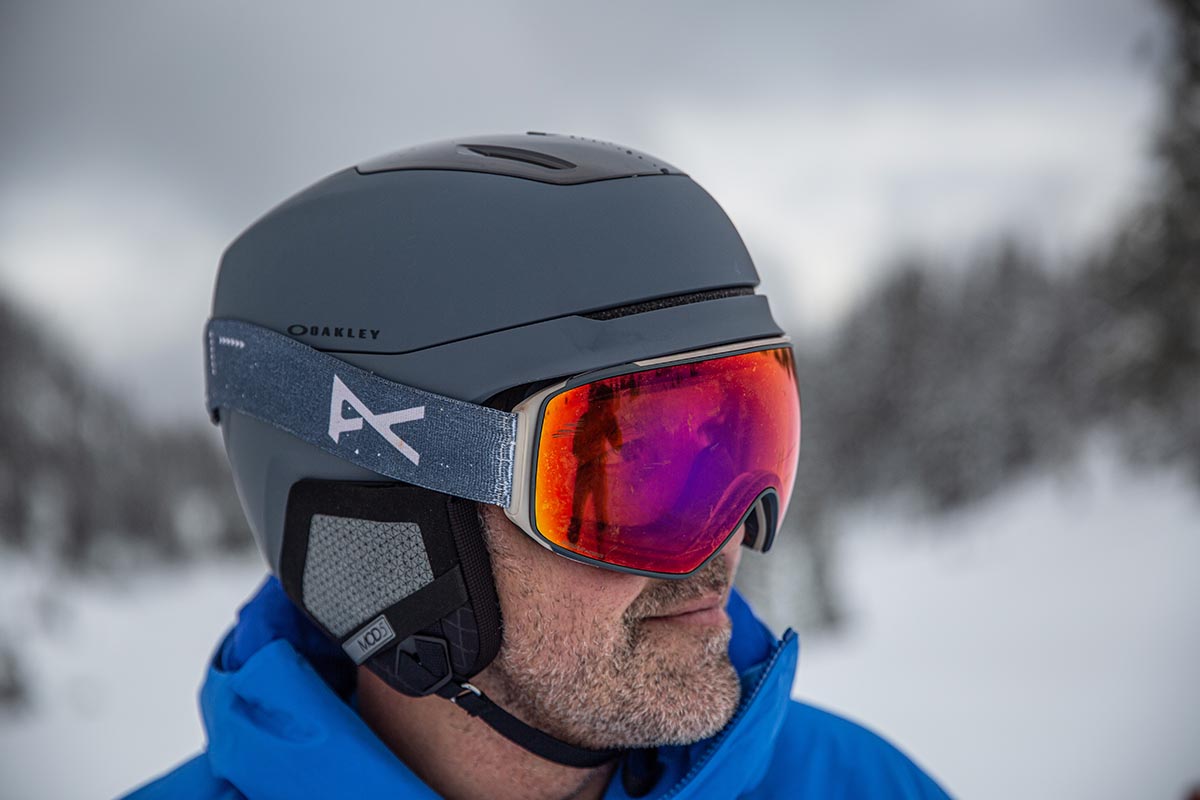
While a number of ski helmets are unisex and are perfectly fine for either men or women, there is a wide selection of women’s-specific snow helmets. These models are quite similar to men’s versions, but with different colorways for the shell and liner, as well as having a smaller fit. There will often be a name change, but the technology is all the same—and so is the pricing. When applicable, we've included the link to both the men's and women's versions of the helmet.
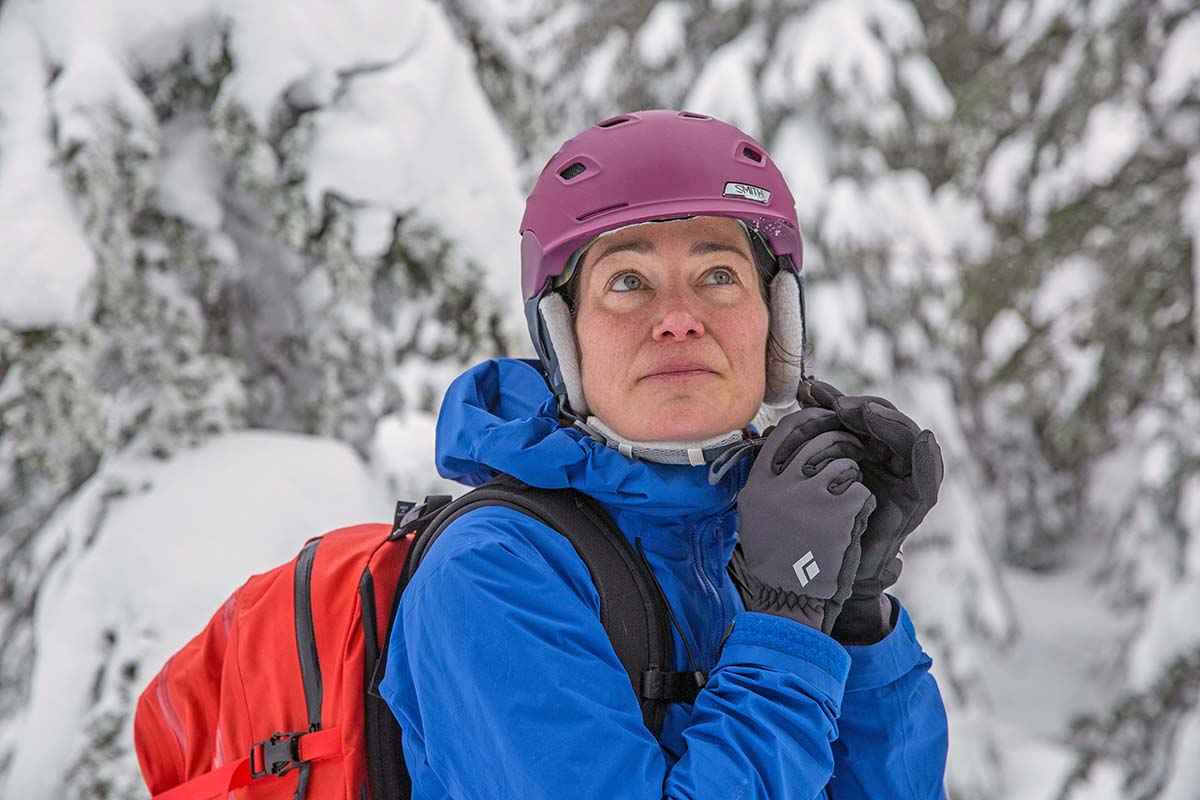
The decision to replace an old ski helmet isn’t always a clear one, and there are still debates to this day about when’s the perfect time. We’ll start simple: If you take a substantial crash and hit your head, it’s time to replace your helmet. Full stop. Additionally, if you have a helmet made with EPS foam—the vast majority of designs utilize this construction—and take a hard enough hit to crack the foam, it’s smart to replace it. Remember, EPS foam is designed to crush on impact, so even dropping the helmet from a few feet on a concrete floor could create this level of damage. EPP foam designs like Giro’s Emerge are built to withstand multiple impacts, but if the damage is direct and serious, it's always best to replace.
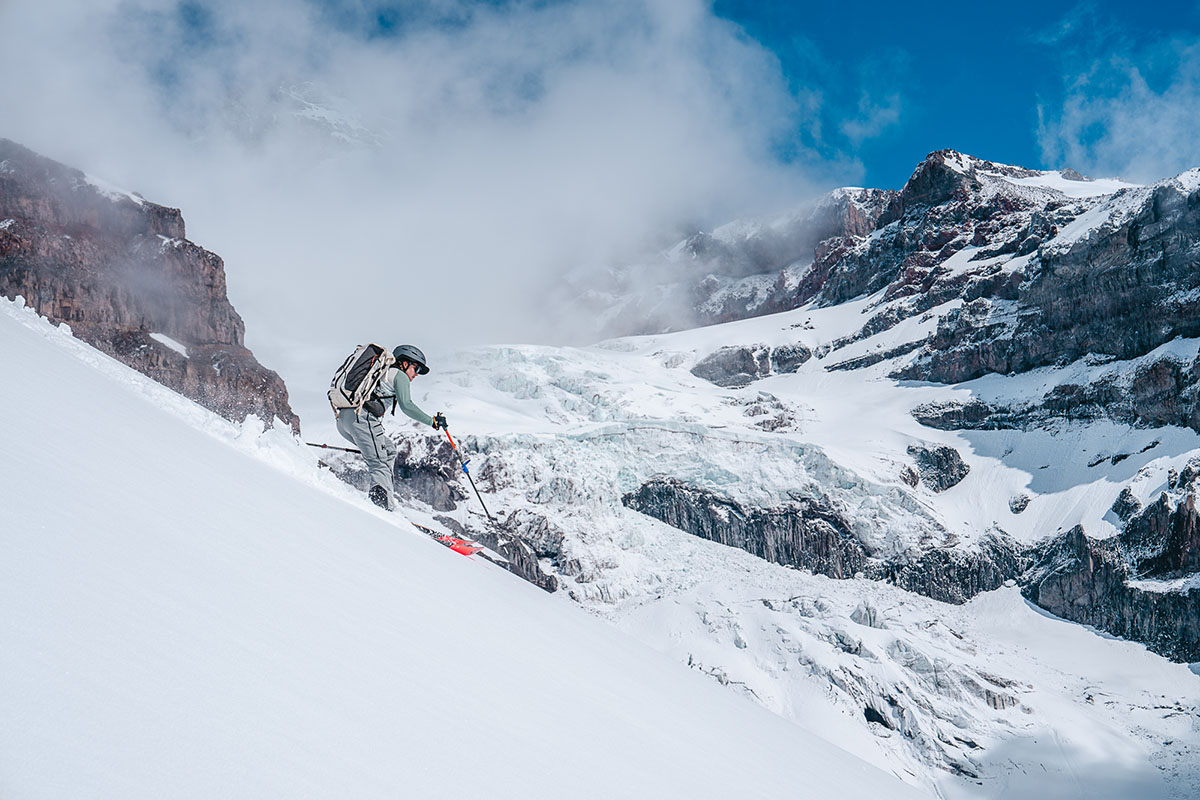
In terms of longevity, that’s where the waters get murkier. Many manufacturers recommend replacing every three to five years—and even sooner if you’re a high-volume user. On the other hand, research has shown the foam can last significantly longer (in one case, 26 years) and still perform its intended function. For some thoughtful, data-backed takes on when to replace your helmet, we've found the Snell Foundation and the Bicycling Helmet Safety Institute to be valuable resources. In the end, here’s our opinion: This is a safety device, and in a world of $800 skis and $200+ lift tickets, we think springing for a new helmet when you’re in doubt about its condition is a smart investment.
Back to Our Top Ski Helmet Picks Back to Our Ski Helmet Comparison Table